Childhood Open-Mouthed Facts About The Karate Kid
The Karate Kid was a viral and cultural phenomenon way back in the 1980s. It was such a sensational hit that millions of kids around the world began tying headbands around their heads. Not just that; every kid wanted to master the crane kicks and recite Miyagi’s wisdom.
We’ve seen several amazing martial arts movies since then, but only one or two (OK, maybe three) can match The Karate Kid’s impact. The movie even spawned an entire franchise! It filtered into the 21st-century with the introduction of the Netflix series Cobra Kai.
Incredible Facts About The Karate Kid
The Karate Kid didn’t just have some of the most realistic martial arts scenes, it had an amazing plot. A plot that taught grit and strength even when the odds are against you. Writing this and the goosebumps won’t stop! But that’s not the only thing that’ll make your hair rise.
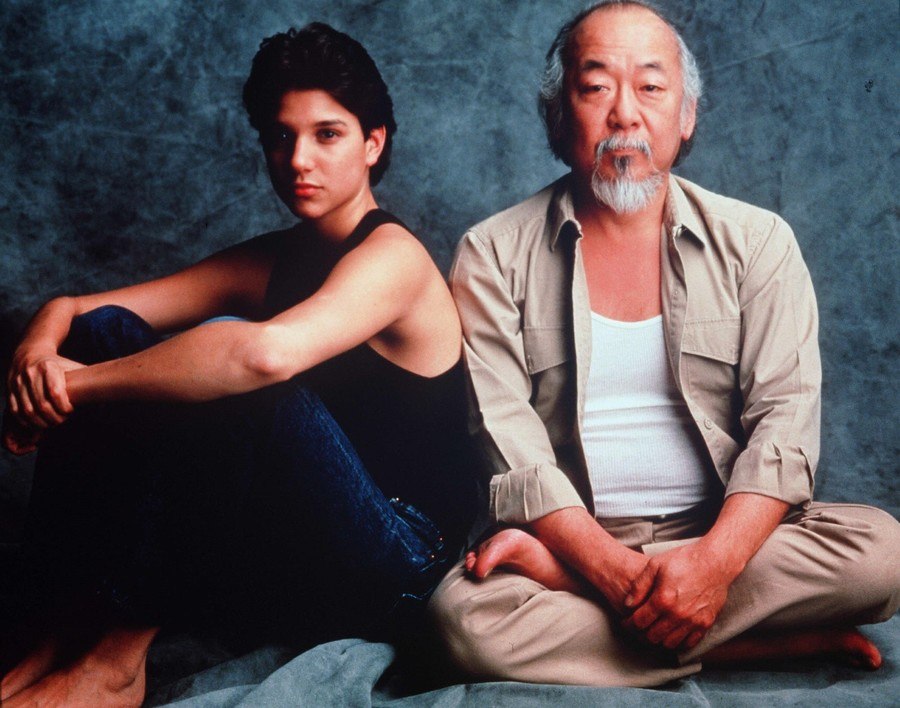
Having such a huge impact on film history, it’s unsurprising that the production and filming of The Karate Kid are brimming with some fascinating facts that many don’t know. Join us as we crane kick our way through the best ones. If you haven’t watched it yet, there are spoilers below!
The Karate Kid? Nope, The Karate Adult
Sorry if we’re about to ruin some childhood memories, but we promised facts. The first one is that Ralph Macchio, who played the character of Daniel LaRusso – The Karate Kid, wasn’t a kid. He was already 22 years old at the time of filming the famed movie.

No, that’s not an error. And we aren’t kidding. The Karate Kid graduated from high school years before becoming one of the most renowned child actors of the 1980s. He played his role perfectly and his physique didn’t raise any red flags.
The Iron Man and Ghost Rider Were No Match
A long list of actors, most of whom are now big names in the industry, were rumored to be in the running for the role of LaRusso. Word on the street was that Tom Cruise and the golden child of the 1980s, Emilio Estevez, were on the list.
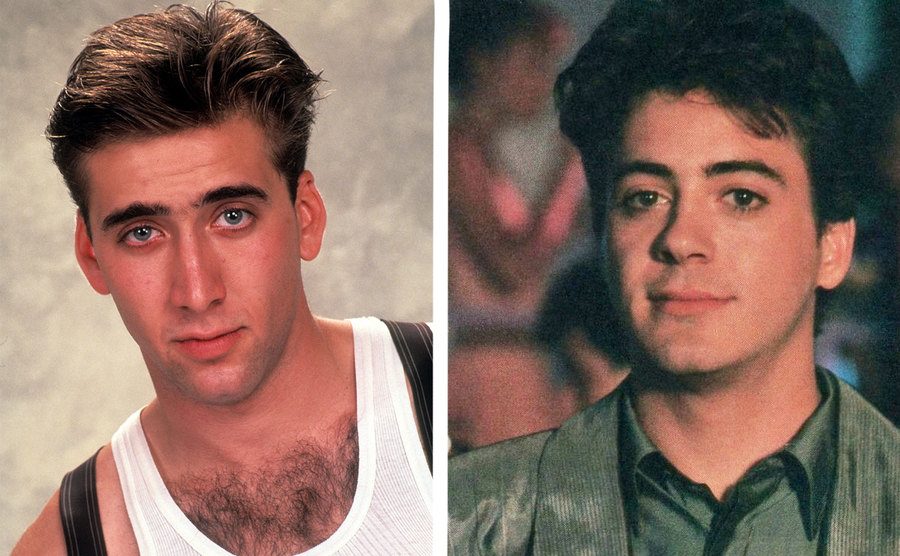
While no one is sure if these two names were in contention for the role, two other names were serious contenders – Robert Downey Jr. (who hadn’t had his big break yet) and Nicolas Cage (who was already sure to become a star).
The American Mr. Miyagi
Another fact that’ll drop your jaw is that Mr. Miyagi (played by Pat Morita) had an American accent. Yes, the sensei was American. That’s because, unlike his character – who was born on the Japanese island of Okinawa – Morita was born and raised in California.
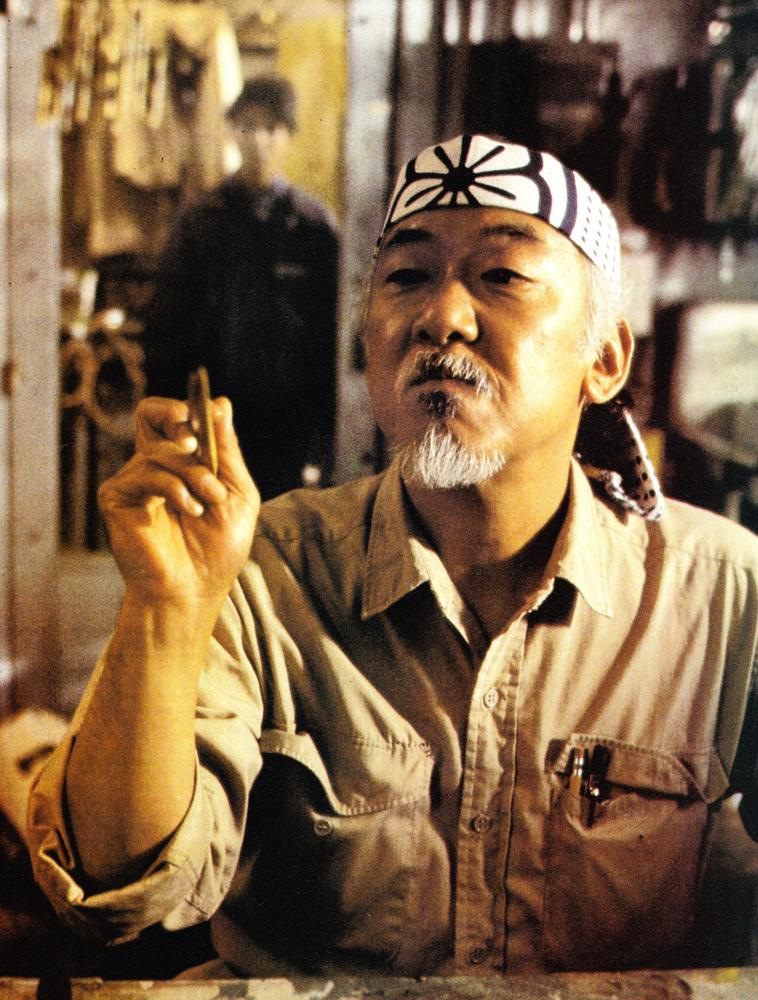
How did he have such a good Japanese accent? Well, actors…what can you say? They’re so good, aren’t they? Morita did have Japanese parents. So, it’s safe to say that gave him an edge when imitating the accent. Some fans were astounded to hear Morita’s real accent.
Ralph Macchio’s Wax On, Wax Off Car
Who doesn’t remember “wax on, wax off”? Certainly, everyone who’s seen the movie at least once does. It is a Mr. Miyagi mantra that turned into an 80s meme. The scene involves the karate teacher instructing a frustrated LaRusso to carefully apply wax to Miyagi’s vintage car.
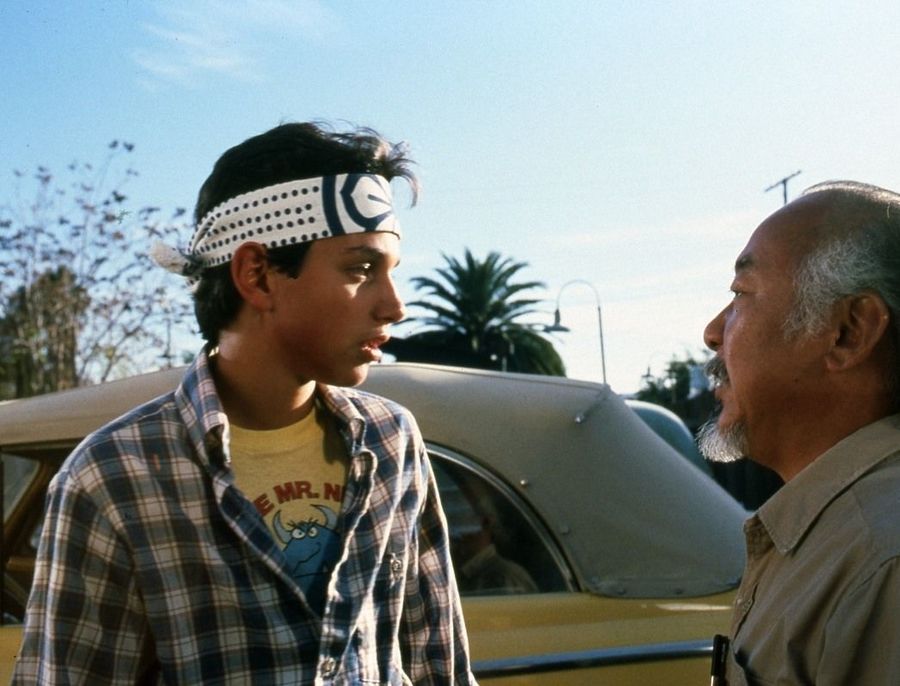
For automobile lovers, the car in question is a 1947 Ford Super Deluxe convertible. Mr. Miyagi then asked LaRusso to remove the wax as meticulously as he applied it. It turns out his effort paid off because he was gifted the car after the movie release!
Mr. Miyagi’s Fake Crane
Do you want to skip this fact? Because going to shatter your childhood. We’re sorry. Do you remember the crane kick that Mr. Miyagi demonstrated to LaRusso? The one that became a central and key part of the plot as the latter tried to master it?
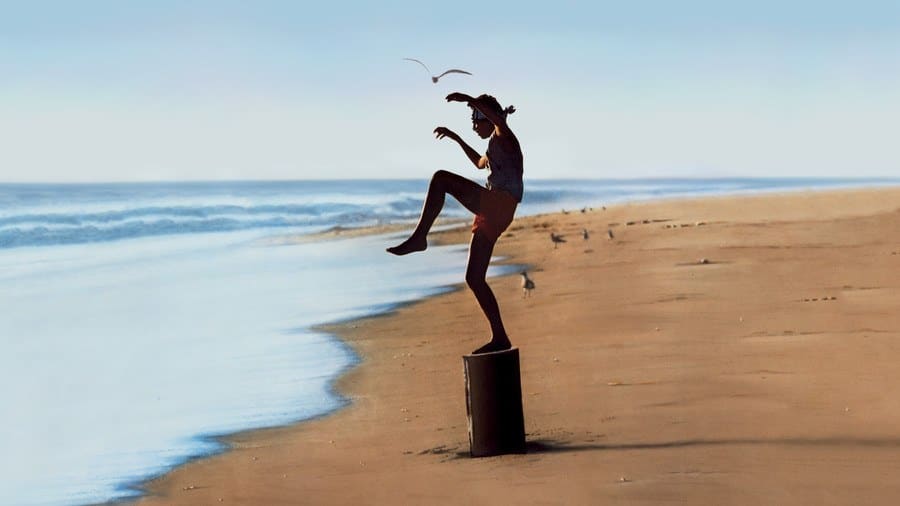
Yes, that one. At the time the movie was filmed, Morita was 48 years old. And he wasn’t a professional karateka, either, so the production crew thought it was too risky for Morita to stand on the pole. They got a stunt double to wear a bald cap and create that moment instead.
Daniel Should Have Been Disqualified
As we all know, LaRusso crane kicks his way to victory and defeated the villain, Johnny Lawrence, in one swoop. Quite frankly, not many movies can match this sense of justice.
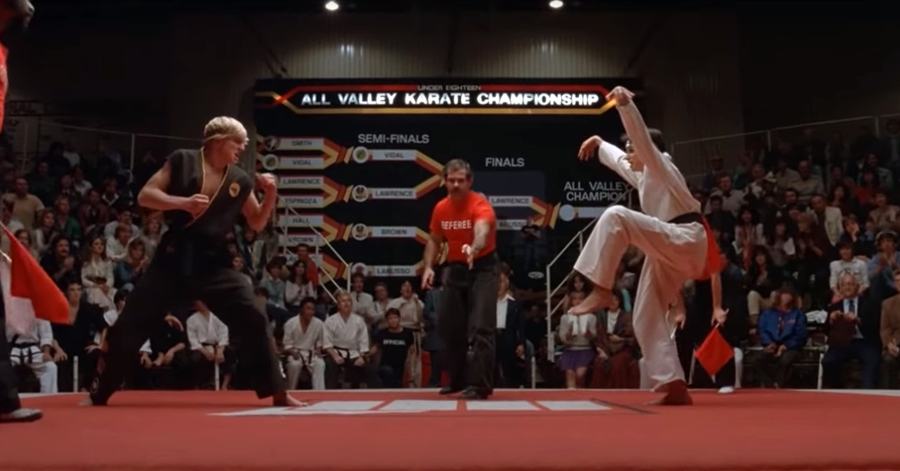
But one thing was off: Anyone familiar with karate will point out that the movie would almost certainly have resulted in LaRusso’s disqualification. Although there is contact in karate tournaments, no move should incapacitate or hurt the opponent. LaRusso’s crane kick would have rendered him unfit for the championship.
Easy, It’s Just a Movie
It was a challenge to recreate the classic Halloween scene in which Mr. Miyagi saves LaRusso by knocking out his bullies. Morita’s stunt double in the film, Fumio Demura, a professional karateka, was accused of hitting the other actors too hard in the scene, resulting in multiple takes.
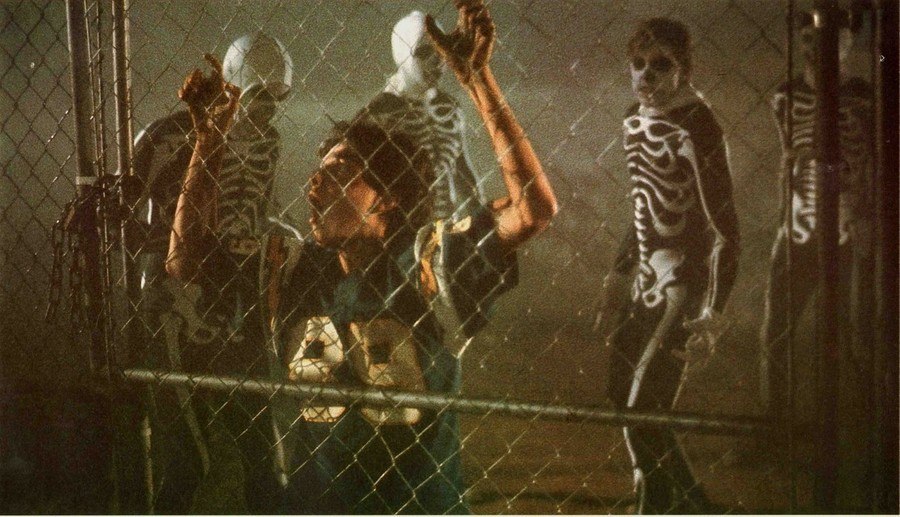
Fumio claimed that the scene could be shot in one take if he was able to use his pupils. The director wasn’t happy with the arrangement, but he was exasperated with the way things had gone to that point. So, the irritated director agreed, and the entire fight was reshot in a single take, just like Fumio said.
The Karate Kid From DC
In the DC Comics universe, the “Karate Kid” was a lesser known (but still copyrighted) hero. Karate Kid was a member of the Legion of Superheroes and a key figure in the comic book. The filmmakers approached DC Comics to negotiate the use of the name “The Karate Kid.”
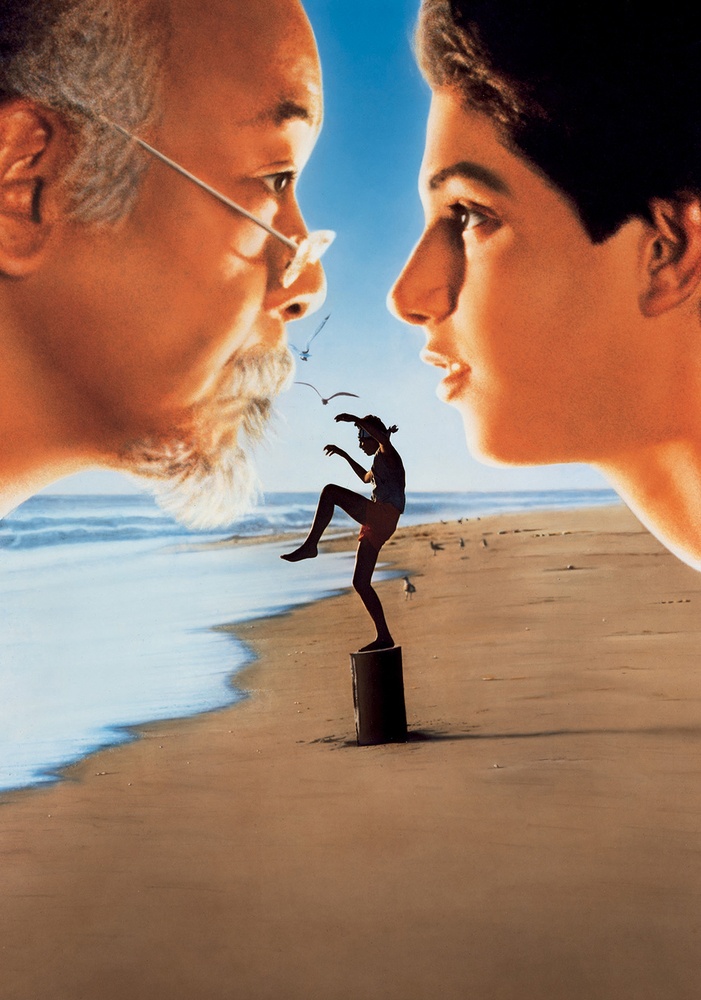
They felt it was a good marketing tool to compromise on. “Karate Kid” owned by DC Comics had no problem with Columbia Pictures titling the movie after their comic character. In hindsight, we get the feeling DC would have negotiated differently if they knew how big the movie would become.
There Was a Real-Life Miyagi
Many characters in renowned movies were influenced by a real person, and Mr. Miyagi was no different. The screenwriter for The Karate Kid, Robert Mark Karmen, found inspiration for Mr. Miyagi’s name and character from Chōjun Miyagi, a karateka who established a modern approach to traditional martial arts.
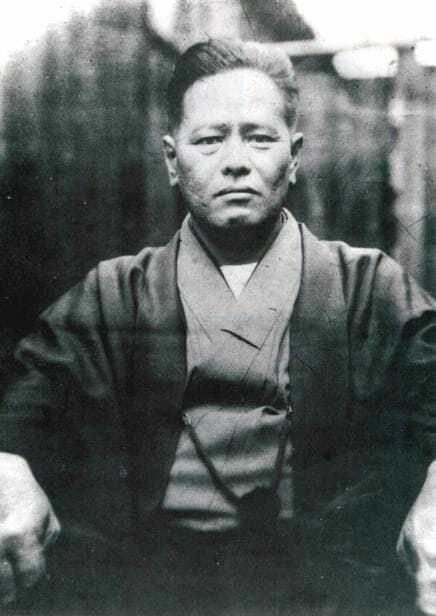
Chōjun Miyagi, the original Miyagi, created a fighting style known as “Goju-Ryu,” which translates to “hard-soft.” Although there was no place in the movie where it is directly stated that this is the specific fighting technique Mr. Miyagi teaches Daniel LaRusso, true practitioners have noted uncanny resemblance.
Chuck Norris Didn’t Say No, But He Would Have Said No
John Kreese’s character, played by Martin Kove, has led to several myths. And one of them involves Norris. The latter had a reputation as a martial arts icon in the 1980s, so it was said that he was offered the role of Kreese.
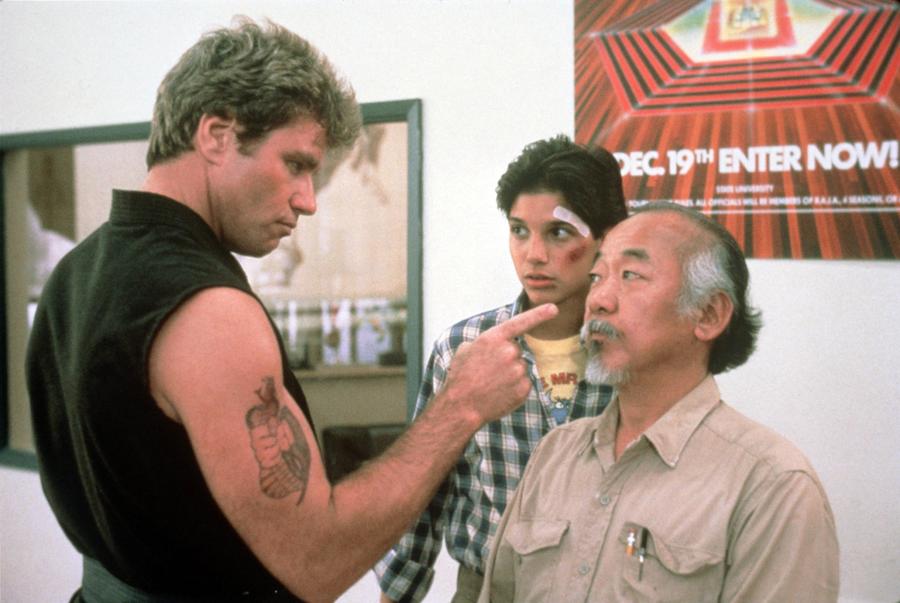
Norris reportedly turned down the role because of the film’s negative portrayal of karate masters. While Norris has stated that this was inaccurate, he has also said that he would have declined the role because of that same reason.
No Such Thing as a Crane Kick
OK, we know we’ve done a lot of damage already with these facts. So, let’s just get on with it, and maybe also apologize for all the childhood memories we’re taking away. If you wanted to master the crane kick so badly and didn’t, don’t worry, it’s not even real.
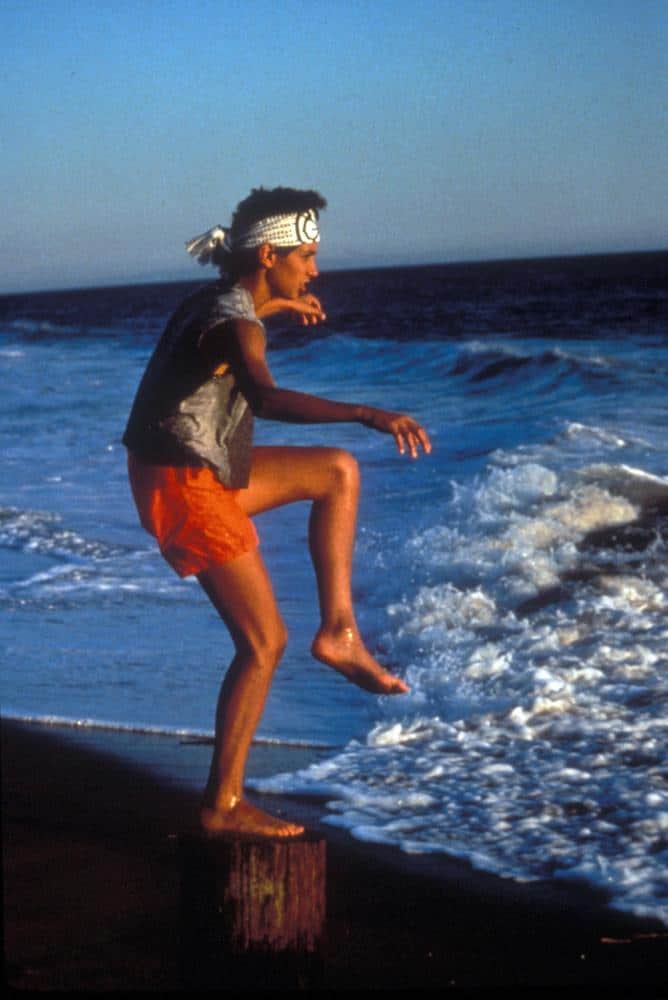
So maybe it’s not totally fictional because the stance is used in kata displays. But the actual skill moves of kicking someone when posed like a crane is nothing real. It is just a silver screen lore. Did anyone make fun of you for not mastering it? Well, you won.
Pat Morita’s Near Miss
We’ve grown so used to Pat Morita as Mr. Miyagi that it’s almost impossible to imagine someone else playing that famed role. But he was not originally cast in the role of Mr. Miyagi, a near-miss in film history. Thank goodness.
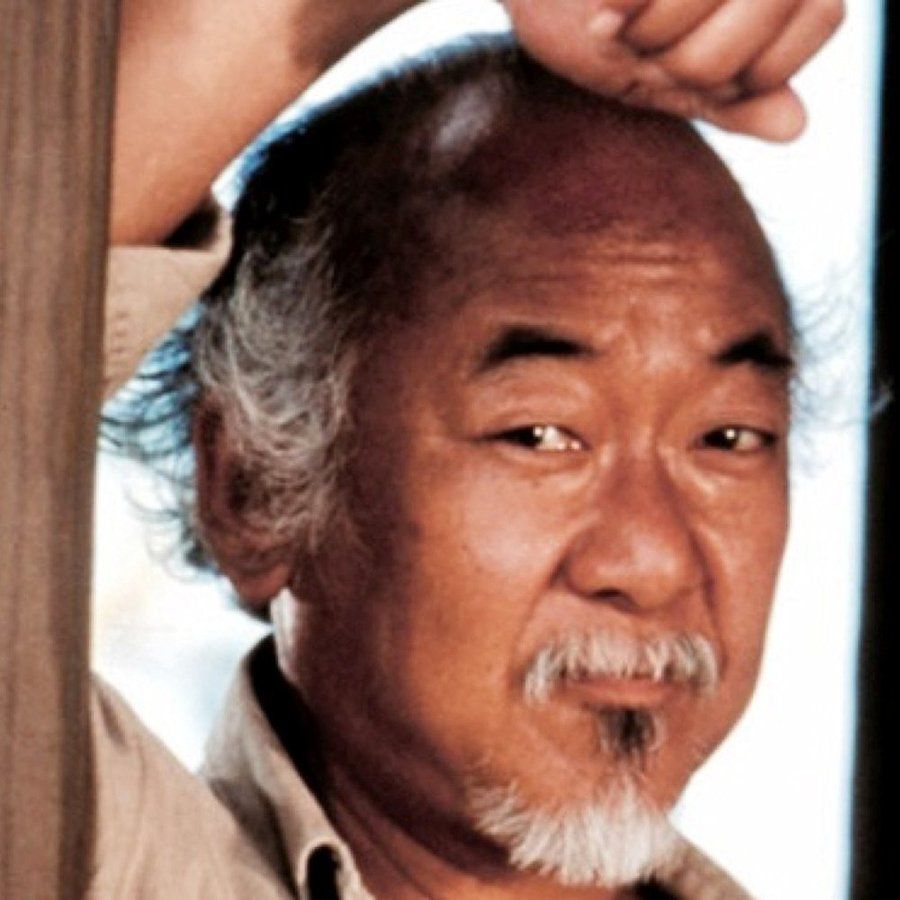
The casting staff saw Morita’s history of performing comedic roles – such as his appearances on Happy Days and M*A*S*H – as a drawback. Based on what we learned, it took Morita five auditions to persuade director John Avildsen that he could set his comedic persona aside and take on the role of the somber Mr. Miyagi.
The Studio Almost Cut Mr. Miyagi’s Drunk Scene
LaRusso encounters a visibly drunk Mr. Miyagi in a pivotal scene in The Karate Kid. The studio originally decided that the scene slowed down the film’s pace and asked Avildsen to remove it from the final version. Avildsen was adamant in his refusal.
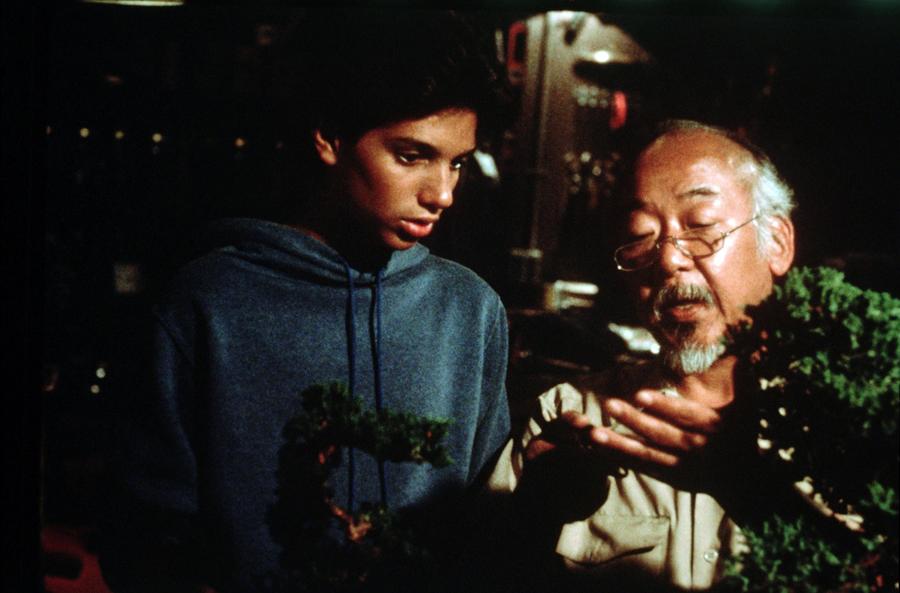
By displaying Miyagi’s fragility and depression at being a widower, the scene solidified an emotional growth in the connection between LaRusso and Miyagi. And according to Avildsen, Morita was nominated for an Academy Award for Best Supporting Actor because of the moment.
A Referee for Life
Pat E. Johnson played a few roles in The Karate Kid franchise, and this is one of the few Chuck Norris nods in the film (indirectly). Johnson was a stuntman, fight choreographer, fight coordinator, and actor in the film series. He was also a long-time student of Norris.
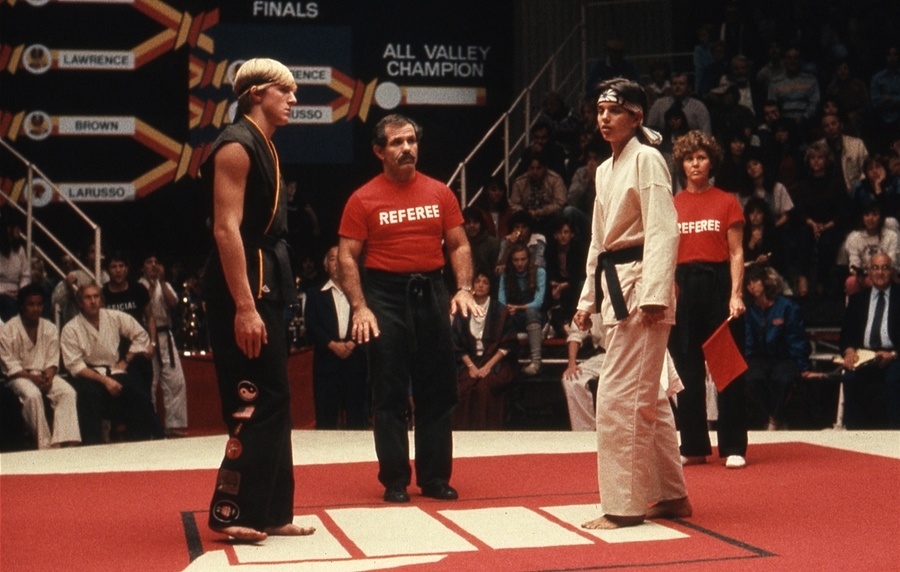
Johnson appears as the referee in the infamous final fight scene between LaRusso and the bully who never left him alone, Johnny Lawrence. Only four people on the set had any kind of martial arts experience, and Johnson was one of them.
Like Father, Like Son
We can probably all agree that the most hated guy in the movie (and in the 80s by some kids, to be honest) is LaRusso’s nemesis and bully, Lawrence. But he had no backstory in the movie. Lawrence, who was almost named Donald Rice, was played by William Zabka.
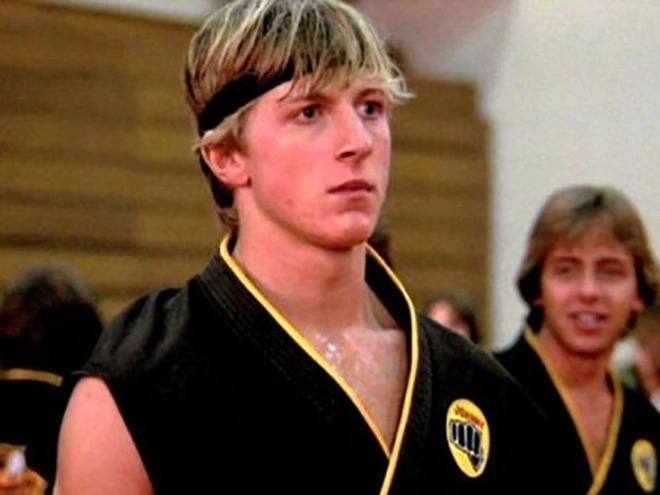
Zabka decided to develop a backstory, imagining Lawrence as a child who grew up angry because he was fatherless. And the only fatherly figure he ever had was with the hostile sensei, Johnny Kreese. This produced an interesting contrast between LaRusso’s relationship with Miyagi and Lawrence’s relationship with Kreese.
Johnny Lawrence’s Name Was Unbully-Like
Imagine getting beat up by a guy called Donald. OK, maybe that’s still alright. But what if his surname was Rice? A boy named Donald Rice beating you up might be worse than the injury he inflicted. (No offense intended to anyone named Donald Rice.)
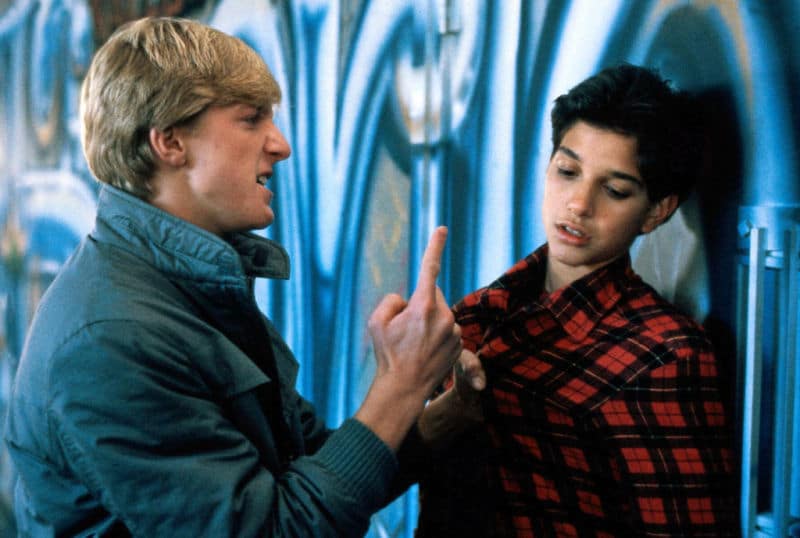
The actors and crew of The Karate Kid were aware of the film’s intended demographic. It is unquestionably a movie that has crossed generational divides, thanks in large part to the meticulous attention to detail. Details such as the antagonist’s name. Yeah, Johnny Lawrence was almost named Donnie Rice.
The End Was Almost Not the End
The script for The Karate Kid was originally offered to Dennis Palumbo, a screenwriter known for shows like The Love Boat. Palumbo liked the idea but stressed that if he were to write it, it should finish with LaRusso’s defeat at the hands of Lawrence. Wait, what?
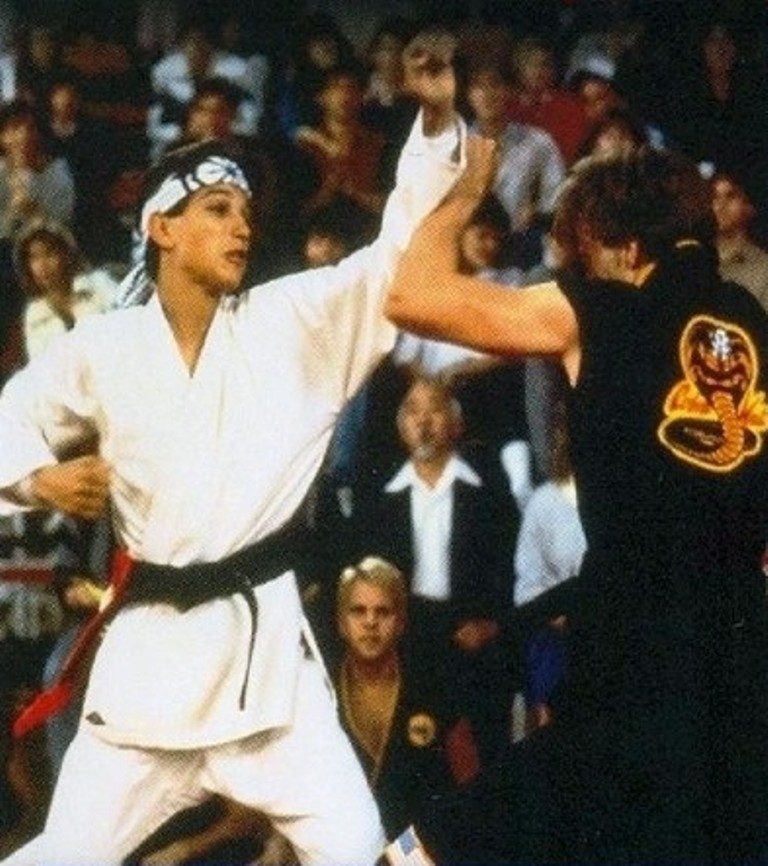
This proposal was vigorously opposed by the producers and studio. Palumbo supported his idea by claiming that Miyagi’s credo of “it doesn’t matter if you win or lose” means the audience would expect a win. Palumbo admits that he was “being a moron” after seeing the franchise’s success.
Some ‘CIA Agents’ Have Revealed Something
We heard some die-hard fans of The Karate Kid were determined to find every place the film was shot. The simplest part of their mission was knowing it was shot in and around Los Angeles. Some investigative fans discovered that Mr. Miyagi’s workshop wasn’t a workshop, but a parking lot.
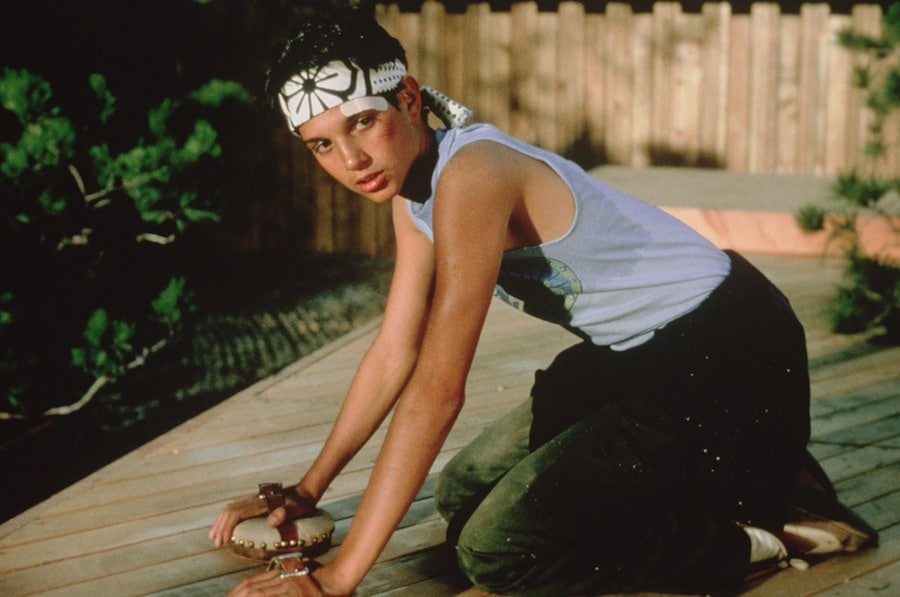
We’re pretty sure anyone could identify a parking lot. But the production crew did some work to hide this fact. For instance, the parking lot’s entrance was walled off. The “CIA detectives” also found Mr. Miyagi’s house, which was knocked down a few years after the film was released.
Clint Eastwood’s Bitter Coke Feud
This one is a little weird. What appeared to seem conspiratorial at first turned out to be an iconic cinema actor. Clint Eastwood’s son, Kyle, was one of the first to audition for the role of LaRussa. Thankfully, there was no nepotism when the final decision was made.
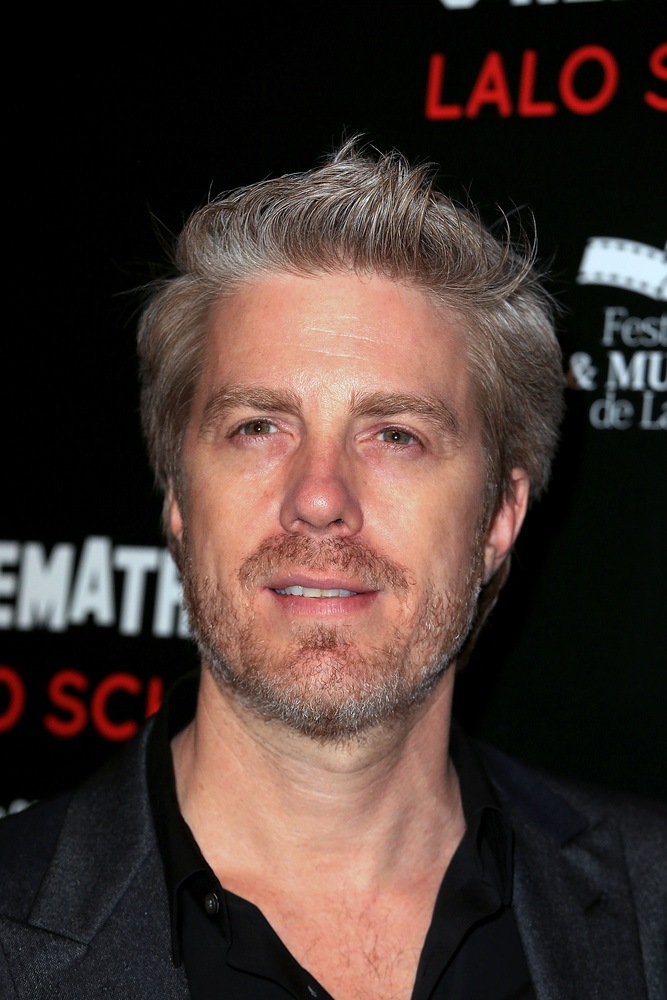
As we saw, Macchio landed the role ahead of Eastwood Jr. Clint Eastwood was bitter about it and as a petty retaliation, he banned any Coke products on his sets. Why Coke? Well, because Columbia Pictures, which produced The Karate Kid, owned Coca-Cola at that time.
A Deal with the Neighborhood Brats
In the opening scene of The Karate Kid, a group of children gives LaRusso and his mother a very warm and enthusiastic farewell. It was not through casting that these kids landed roles in the film, but rather through a contract reached with the infuriated director.
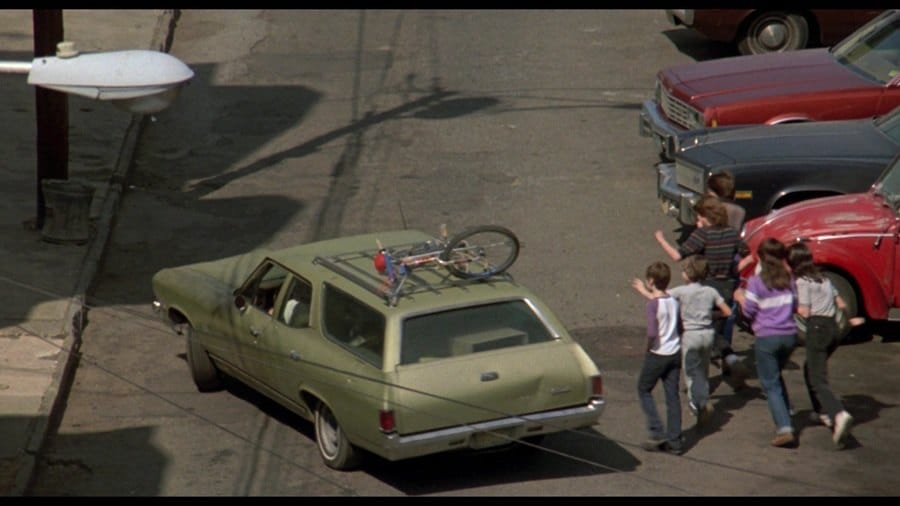
It seems there’s no limit to how much stress Avildsen weathered. The immensely curious neighborhood children would not stop harassing the film crew, according to Avildsen, so he gave them roles in the film to persuade them to back off. Fortunately, the youngsters kept their word!
Another Real-Life Influence – The Original Karate Kids
As it turns out, Mr. Miyagi’s character wasn’t the only one influenced by a real-life person. The storyline of The Karate Kid is very fascinating. It originated from producer Jerry Weintraub and a story he read in the local newspaper.
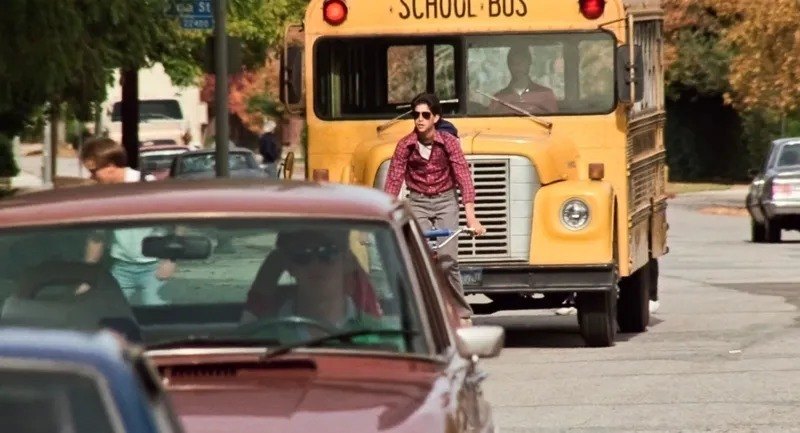
The news story was about a 9-year-old boy who decided to study martial arts after an altercation with a gang. Screenwriter Robert Mark Karmen also decided to take martial art classes after being attacked by a bunch of older kids when he was a child.
A Chance to Show What Really Happens
The plot for this great movie might have been the reality of two of the most important characters, but it also strongly highlights the reality for many high schoolers.
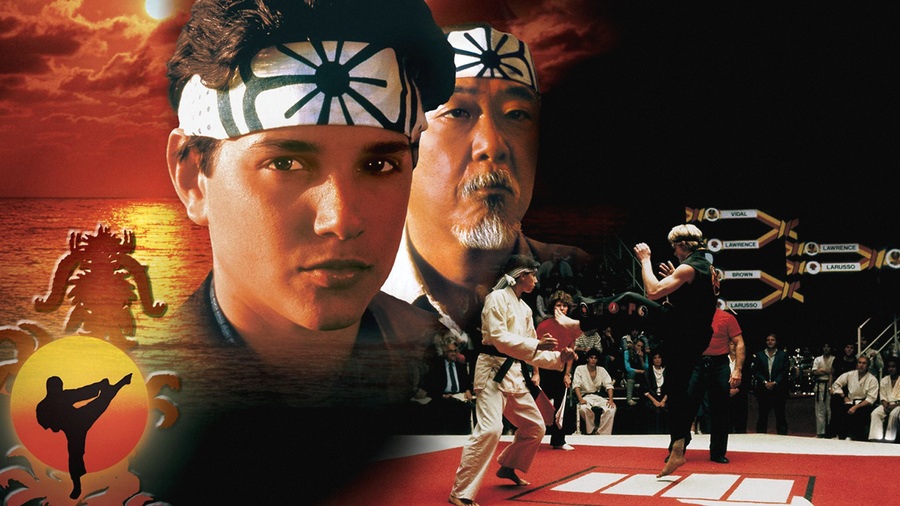
The narrative of the 9-year-old was optioned by Weintraub, who persuaded Karmen to adapt it, making The Karate Kid largely autobiographical for Karmen. It’s safe to say he wrote the story incredibly well, and in a roundabout way, we can say the movie was based on real-life events.
Immortalizing “You’re the Best”
When it comes to intense battle scenes, the 1980s remain the decade of classic soundtracks. Joe Esposito’s “You’re the Best” was immortalized as the soundtrack to Lawrence and LaRusso’s final battle long before a drunken Randy Marsh made a whole new generation aware of it on South Park.
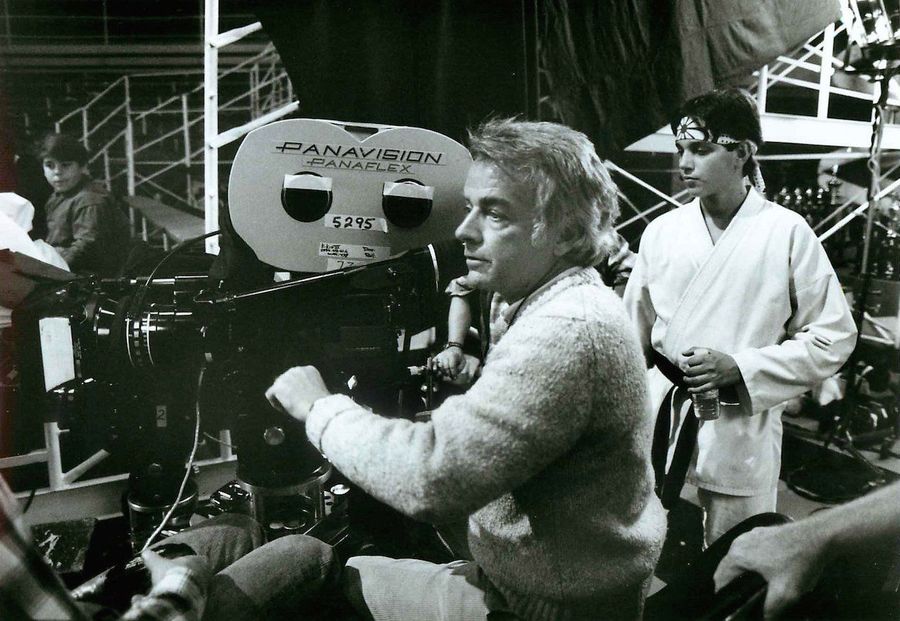
“You’re the Best” was not the best choice for Sylvester Stallone, as “Eye of the Tiger” was chosen instead for Rocky. Fortunately, with The Karate Kid, Avildsen found the ideal platform for the classic song. In the end, LaRusso proved himself to be the best.
Ralph Macchio Wasn’t a Big Sprite Fan
The infamous Columbia/Coca-Cola feud was a real thing. Macchio wasn’t joking about his disdain for the marketing tactic that was placed into the movie. Macchio subtly blocked a Sprite logo on a strategically positioned bottle during a scene at Mr. Miyagi’s dojo.
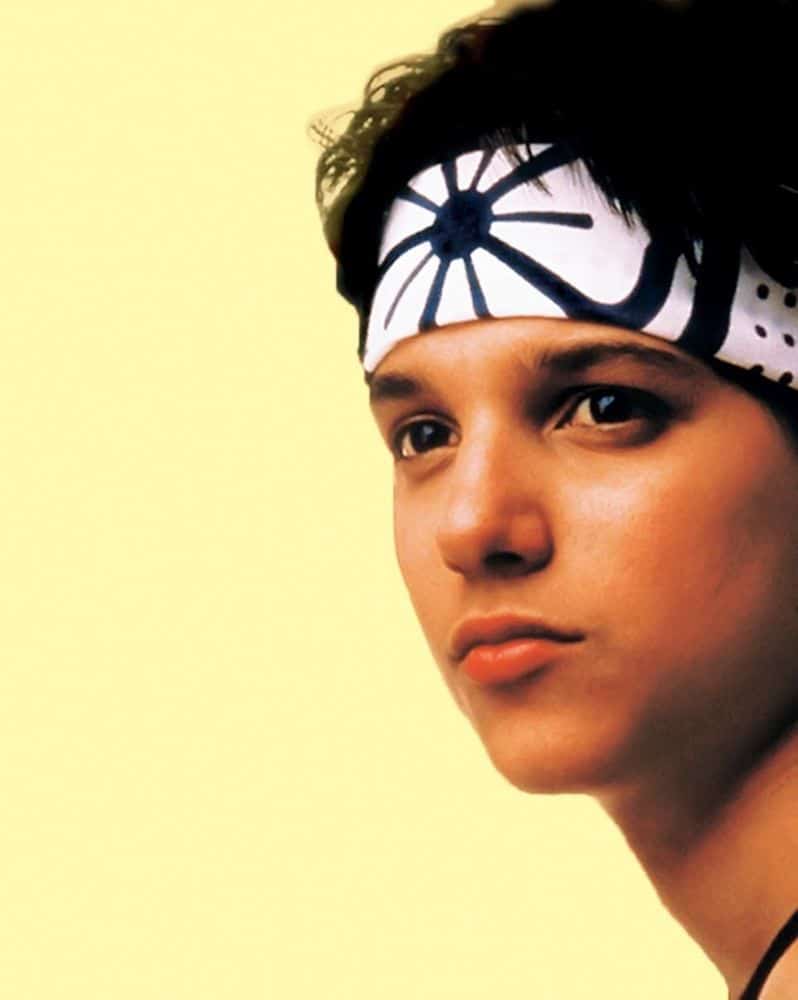
Yes, it was intentional. Macchio blocking the bottle didn’t go down well with the fizzy drink giants, and the crew was made to reshoot the scene. So, while reshooting the scene, he made sure to allow only the shortest glimpse of the logo before blocking it yet again.
A Good Kind of Anger
Kove’s rage convinced Avildsen to give him the role. Weird, right? Let’s take a deeper look: Avildsen sought Kove, who played the hyperaggressive Kreese, and specifically requested that Kove audition for the role.
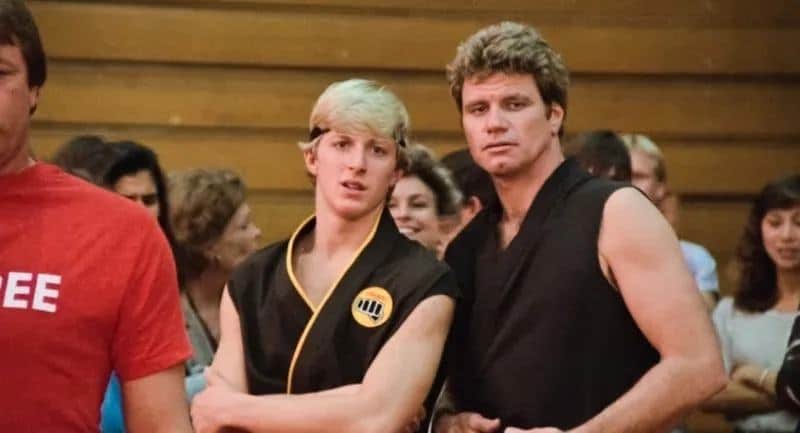
Kove was so determined to get the role that he turned down all other acting opportunities. Unfortunately, Avildsen kept Kove waiting for several weeks. Kove was enraged, and when the audition eventually took place, he raged at Avildsen. His fury was so intense that Avildesen offered him the part immediately!
The Fights We Never Saw
LaRusso and Lawrence had two fight scenes in the original cut of The Karate Kid, but the production crew decided to remove them from the final cut. In the first cut scene, Lawrence sneaks a slice of pie onto LaRusso’s seat in the school cafeteria.
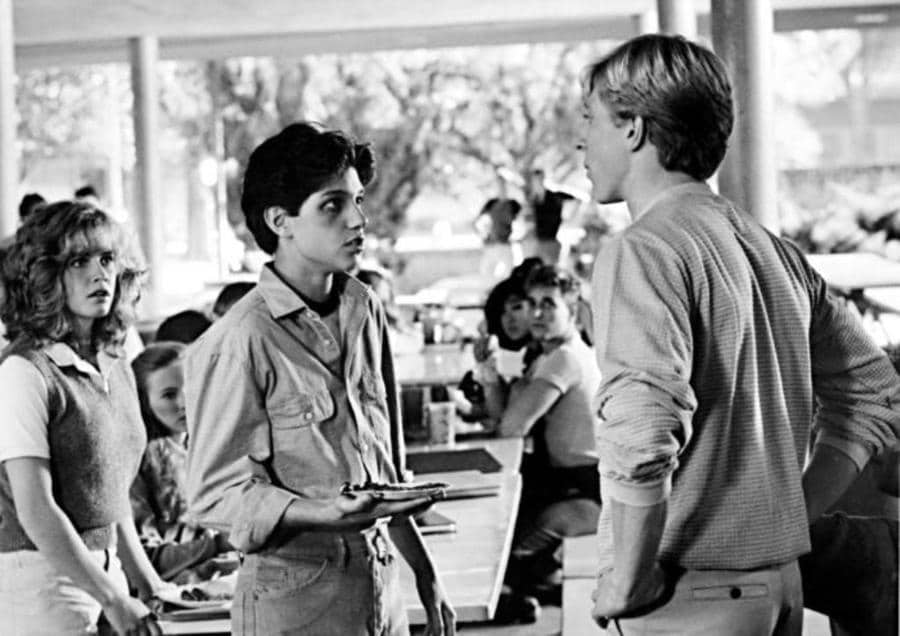
Lawrence is then attacked by a furious LaRusso, who is wearing blueberry pie-covered pants. LaRusso is shown drinking from a water fountain and being tormented by Lawrence in the second fight scene that was cut. The immensely popular follow-up series Cobra Kai refers to the initial fight.
Chad McQueen Lived up to His Character
Sometimes we hear actors aren’t like that in real life. The ruthless ones could be gentle while the gentle ones could be the worst. In the case of McQueen (Dutch), he was as difficult to work with in real life as he was in the movie.
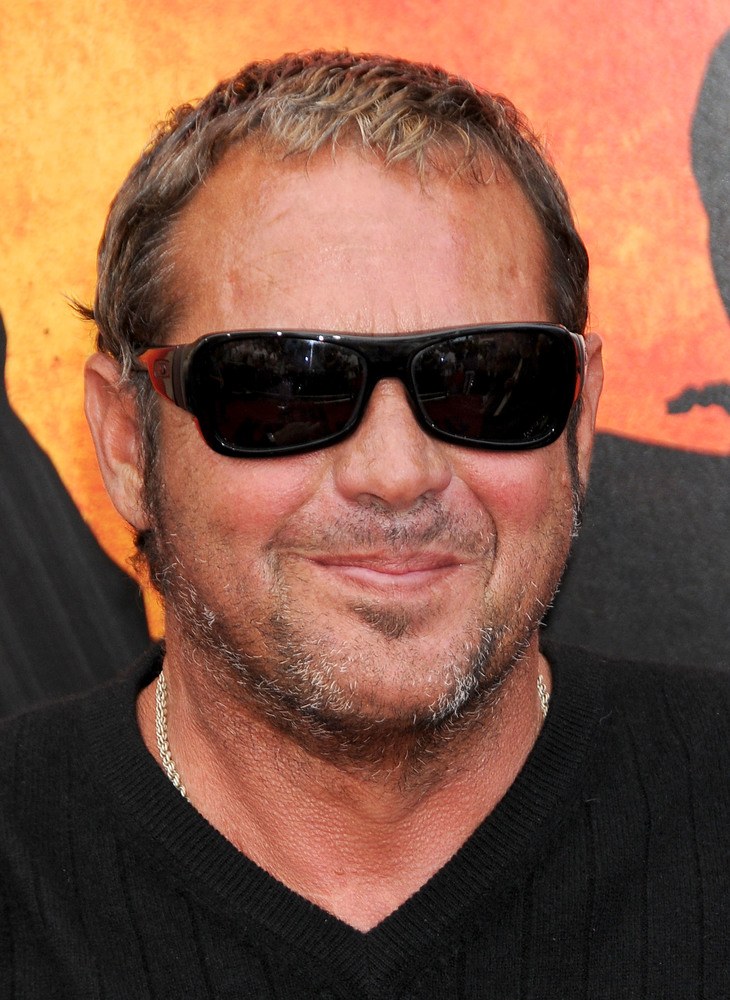
McQueen’s aggressiveness was an example of life imitating art, and we learned that the crew found it problematic to work with him. Dutch was undoubtedly the most brutal member of Cobra Kai.
Mr. Miyagi’s Vertical Challenges
While Morita was extremely skilled and deadly in his martial arts abilities, he wasn’t an imposing figure, and it was a problem for the production crew. Morita was shorter than many of his antagonists.
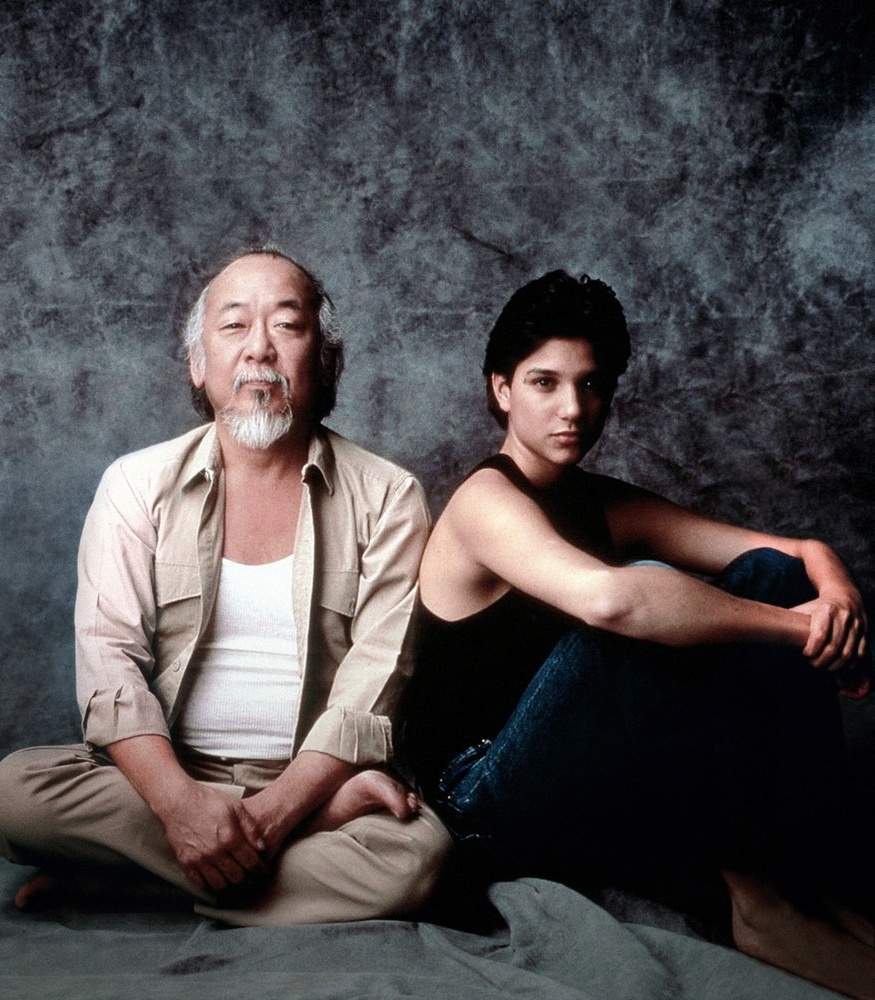
While being significantly shorter than the opponents he had to face, the height difference was not a problem for his karate skills. But it was certainly a huge challenge for the camera. To get the best shots, the crew made Morita stand on a box during some face-to-face scenes.
Why a Bully Is Your Friend
Bullying is fundamental to the plot of The Karate Kid. That’s why we think it’s surprising that the term “bully” is not mentioned in the movie. Neither was any concept of “being bullied” mentioned. Mr. Miyagi made one odd acknowledgment.
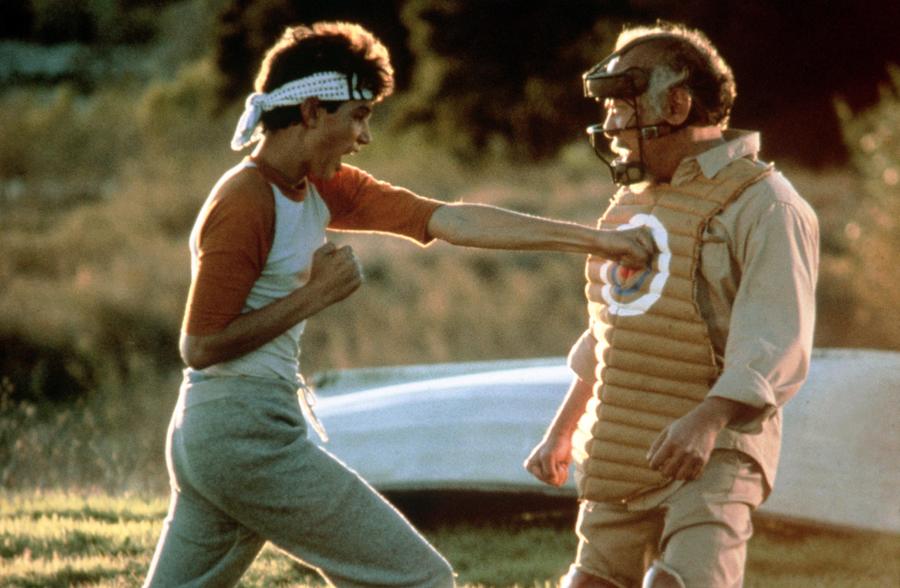
Mr. Miyagi inexplicably recognizes the assailants as LaRusso’s friends after protecting him from the Cobra Kai gang on Halloween. Film buffs feel that omitting the label of “bully” is part of the teacher’s training to reduce any psychological power they might have over LaRusso.
Bruce Lee Never Dies
A real martial arts movie with no connection to Bruce Lee? Impossible. It’s only right that the Little Dragon, Bruce Lee, is a part of The Karate Kid. No, we don’t mean being directly involved. That would be impossible since he passed 11 years before filming began.
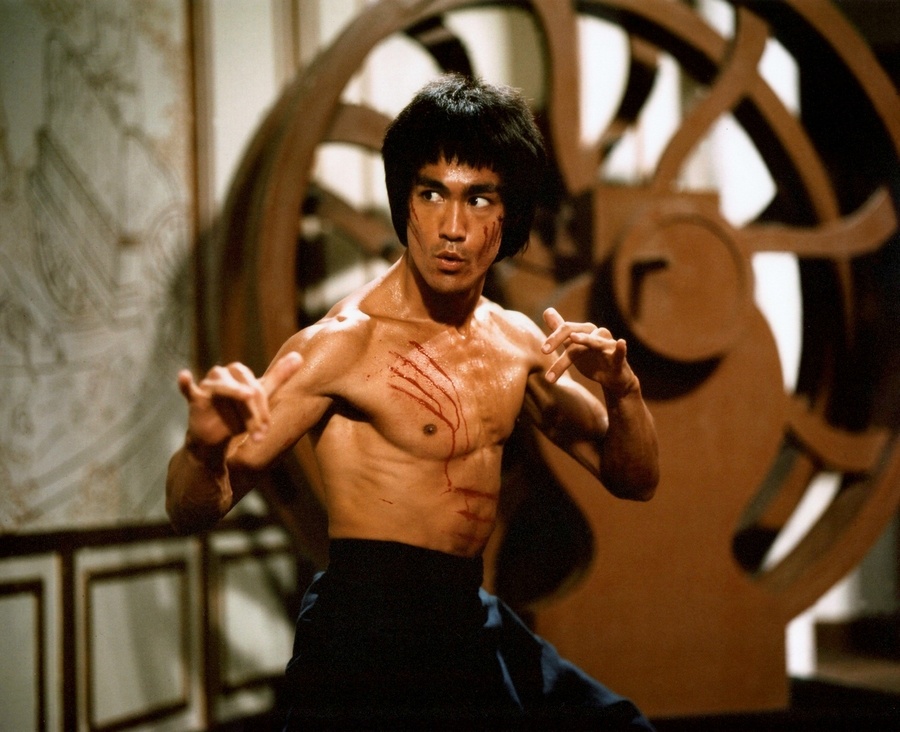
Two actors in The Karate Kid had a connection to Lee, though. McQueen (Dutch) is the son of Steve McQueen, who was a close friend of Lee. The film’s fight choreographer and stuntman, Pat E. Johnson, also had a minor role in Enter the Dragon.
Mr. Miyagi’s Sewing Skills
The historic shower costume worn by LaRusso to his Halloween high school dance is an outfit we wish was shown far more often. LaRusso enters the dance hall wearing a shower curtain around his neck. Ali, his love interest, asks about the costume.
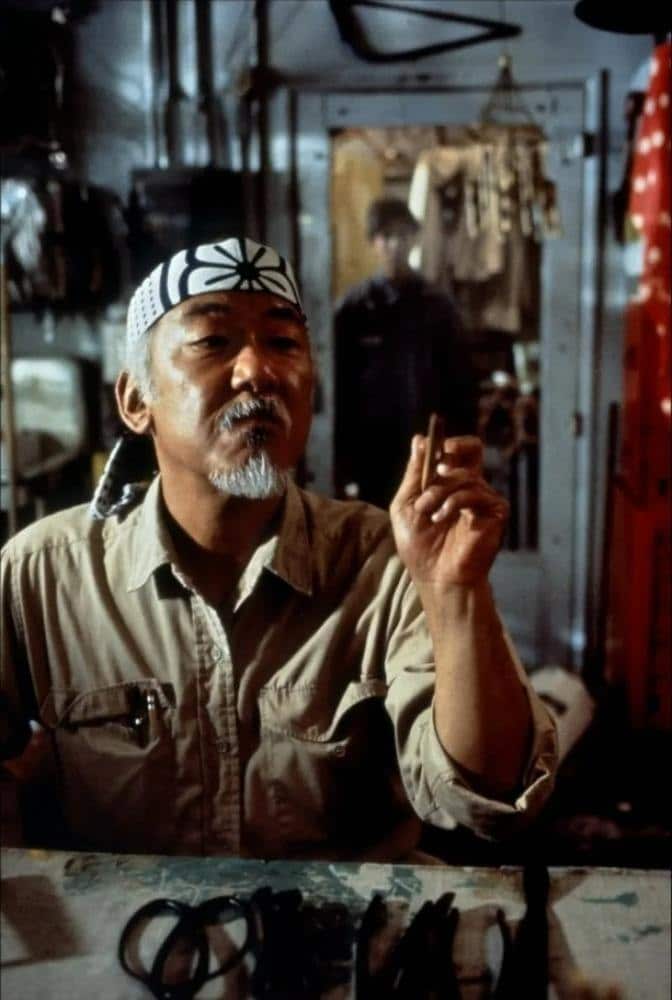
LaRusso says it was handmade for him by a friend. Which friend could that be? In the preceding scenes, strips of the shower curtain can be seen behind Mr. Miyagi as he cuts jack-o-lanterns. If you can’t rewatch the movie right now, don’t worry, we’ve got a snapshot above.
The No-Name Crew
Sometimes we wonder why the Cobra Kai gang was just so ruthless. We have a theory. A good reason for their hatred and hostility could be because most of them were nameless. Dutch is simply referred to by his surname.
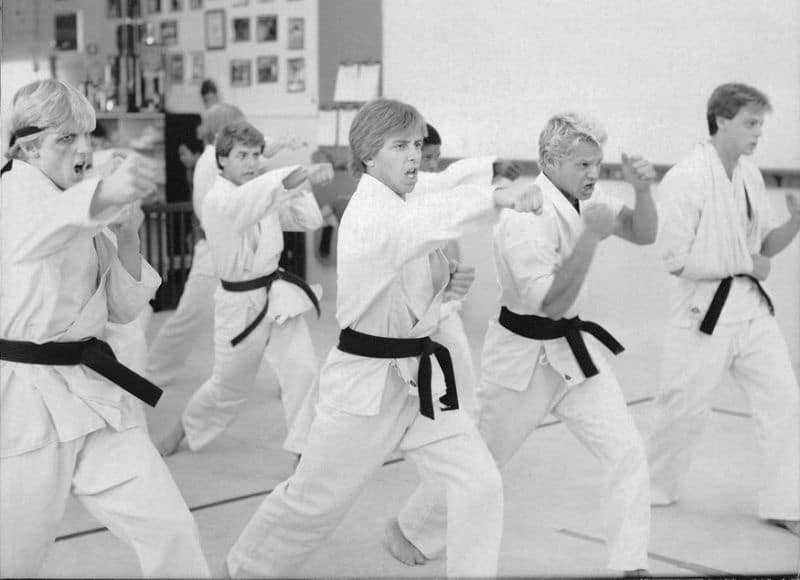
Tommy’s surname is never revealed. Worse, the fifth member of Cobra Kai isn’t given a name at all, and it’s only in the credits that we learn his name is Jimmy! Johnny Lawrence and Bobby Brown are the only two members whose full names are revealed.
Someone Wasn’t Impressed With Ralph
Don’t think too far. This someone is Elisabeth Shue (Ali). She admitted that she was unconvinced by Macchio in the lead role at first glance. Why? It was due to Macchio’s thin and diminutive physique. Do you think she has a point?
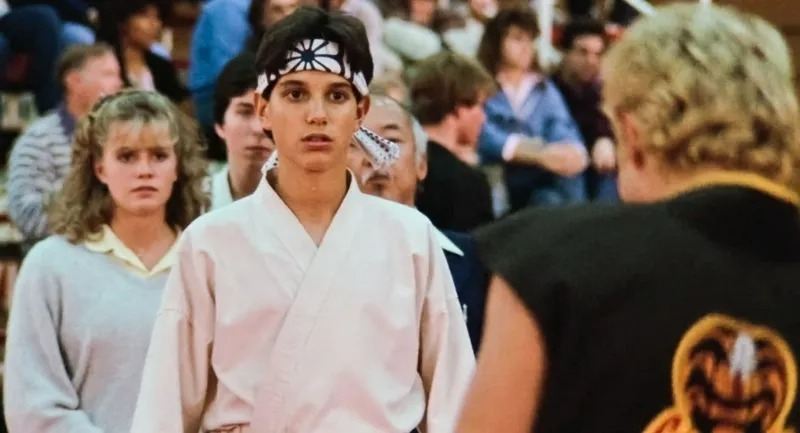
To be fair, when compared to the taller and muscular Cobra Kai kids, Macchio doesn’t look like someone to be afraid of. Maybe it was part of the plot? Maybe not, because the filmmakers had Macchio wear a gi, a traditional karate costume, to emphasize his physique.
Copyright Trouble for The Karate Kid
While DC Comics graciously permitted Columbia Pictures to use “The Karate Kid,” a Brooklyn-based karate instructor took issue with what he saw as a blatant copyright violation.
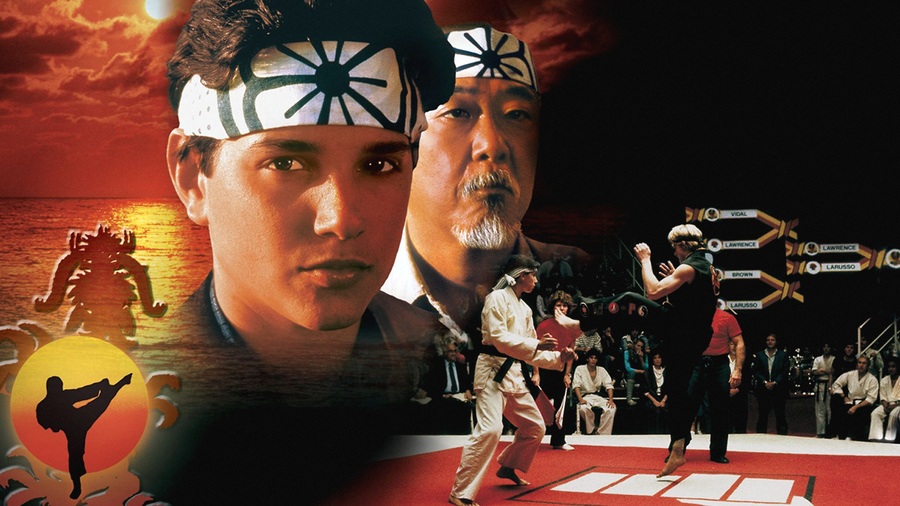
Weintraub and Columbia Pictures were sued by Bill DeClemente, the Brooklyn-based karate instructor. However, DeClemente’s case was dismissed because the courts determined that his claim to be recognized as “The Karate Kid” was not tangible enough to jeopardize his business dealings. Phew! close call.
The Quickest Black Belt in the History of Black Belts
Many of us were so engrossed that it’s understandable if we didn’t notice at first, or did, but just didn’t care. Either LaRusso is the phenom to end all phenoms, or The Karate Kid universe has a time warp. Let’s stick to linear time for now.
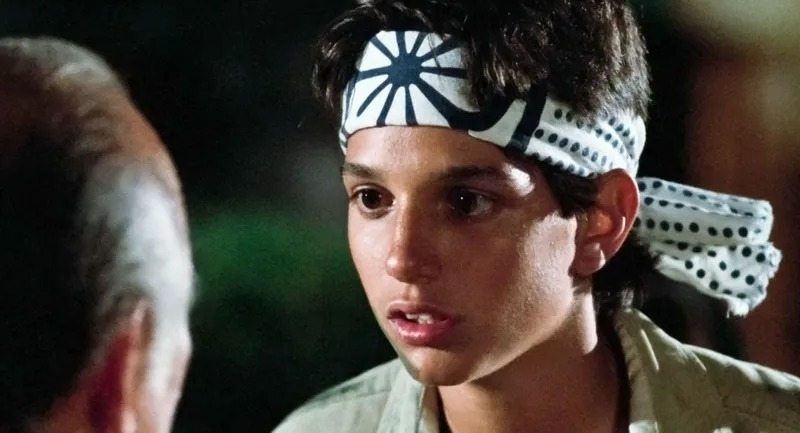
Mr. Miyagi begins training LaRusso on Nov. 1, less than fifty days from The All-Valley Karate Tournament. By the time the tournament arrives, LaRusso has earned a black belt. The thing is, black belts typically take about 5 years of weekly training to achieve!
A Thief and a Sensei? Good Luck Beating That!
It is safe to say Mr. Miyagi was a jack of three or four trades and a master of all. We’re talking about his karate skills, sewing skills, and yes, stealing (skills) too. Mr. Miyagi didn’t appear to have the resources or funds to make or finance a black belt for LaRusso.
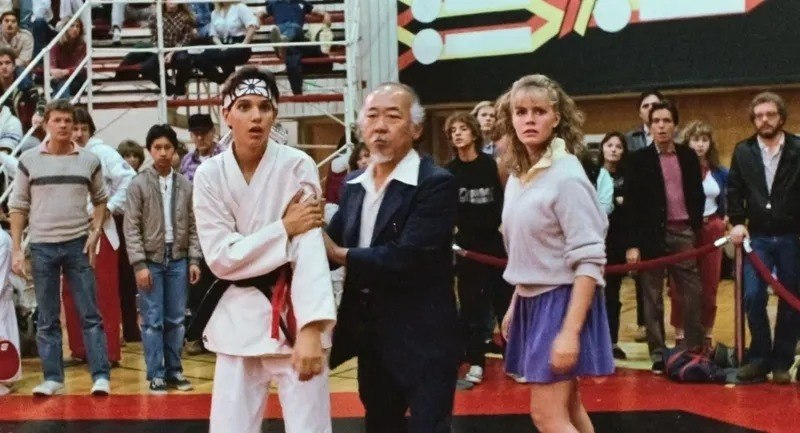
As the official explains that only brown belts and above are allowed, Mr. Miyagi finds a black belt in a gym bag and steals it under the pretense of correcting the registrar’s spelling of his name. He hands the belt to Ali while asking the registrar to correct his name.
Mr. Miyagi Crane-Kicks a Samurai
Some actors are naturally suited to some roles and just appear to fit seamlessly into the profile of the character. Toshiro Mifune was the type of actor one would instinctively think would be perfect for the role of Mr. Miyagi.
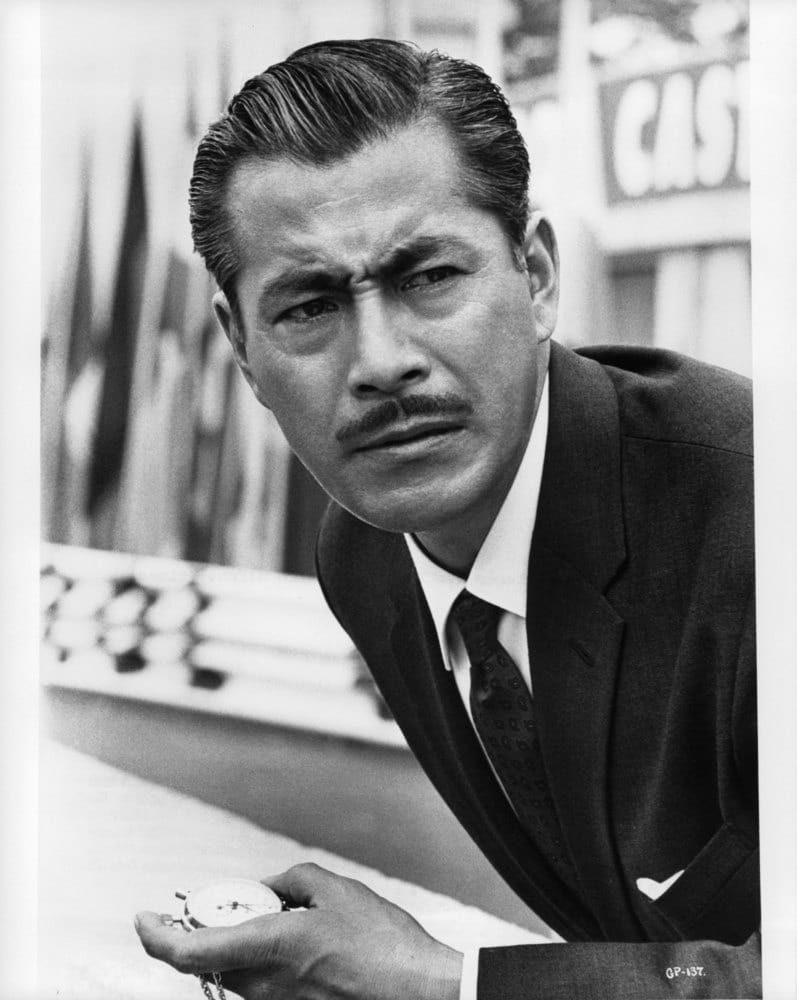
Mifune was a Japanese actor who starred in several samurai films. Weintraub was hesitant to choose Morita because of his background in comedic acting, but Avildsen thought Mifune was “too serious.” His inherently forceful manner didn’t mesh well with Miyagi’s considerably gentler demeanor.
There Was One Karateka
Ron Thomas, who played Cobra Kai thug Bobby Brown, was one of just four people on the set of The Karate Kid who had martial arts training. Thomas was so well-trained that he brought a black belt in Ju-Jitsu with him. Whoa! How cool is that?
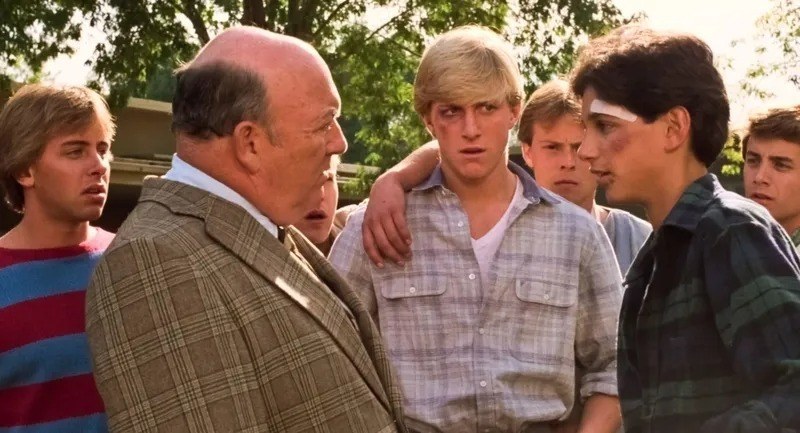
Thomas’ background and experience in martial arts were what convinced Avildsen to let Thomas choreograph all of his fight sequences. Thomas describes himself as “the only member of the infamous Cobra Kai gang with a conscience” on his LinkedIn profile. He is now a pastor.
The Moment of Truth?
Language translation can be very tricky. Something similar happened with The Karate Kid. Directly translating the titles of English movies doesn’t always work out. That’s why marketing teams usually come up with some clever and thoughtful titles. Let’s look for an example to better grasp it.
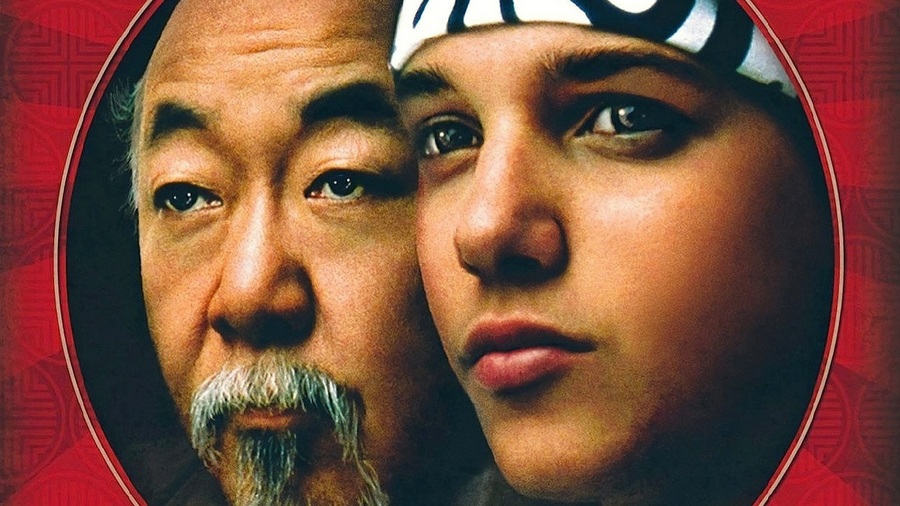
Leaving Las Vegas was renamed I’m Drunk and You’re a — in Japanese. In France, they decided that The Karate Kid wouldn’t work and renamed it Le Moment de Vérité (The Moment of Truth). Thankfully, French moviegoers recognized it as The Karaté Kid, and it replaced the less memorable title.
A Tale of Black and White
While The Karate Kid might appear to be a revenge film at first sight, the rivalry between LaRusso and Lawrence has a deeper meaning. Both teens are said to be quick-tempered and impetuous, which adds to the conflict between them. But that isn’t all.
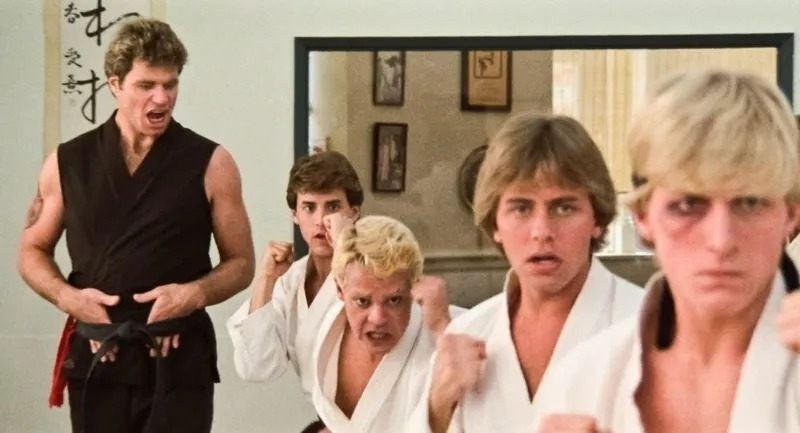
The Karate Kid then gradually becomes more of a story about a kind and wise teacher, Mr. Miyagi, who helps this misbehaving adolescent get back on track. While Kreese educates his student, Lawrence, negatively, Mr. Miyagi is a light of patience, teaching LaRusso how to control himself.
Burgers Got Elisabeth Shue the Role
Some names made waves during the 1980s, and Elisabeth Shue was one of them. Just like the way Steve Buscemi seemed to appear in practically every film in the 1990s. Shue’s film career began with the release of The Karate Kid.
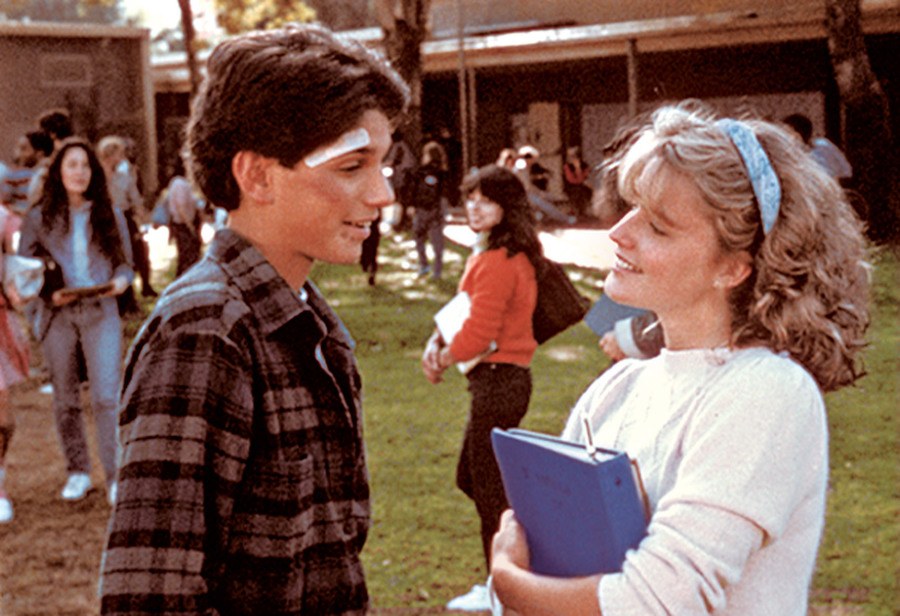
Usually, people who haven’t been in any movies have to be exceptional in their auditions to even get considered. But Shue was chosen by the producers and director to play Ali Mills in part because of a well-known series of Burger King commercials in which she starred.
The Crane Kick Isn’t Real? Think Again
Earlier, we said there was nothing like the crane kick in karate. Maybe that’s true, but how about in mixed martial arts? During a UFC bout between Lyoto Machida and Randy Couture, we got to see the legendary crane kick in an almost unbelievable way. Trust us, it was JAW-DROPPING!
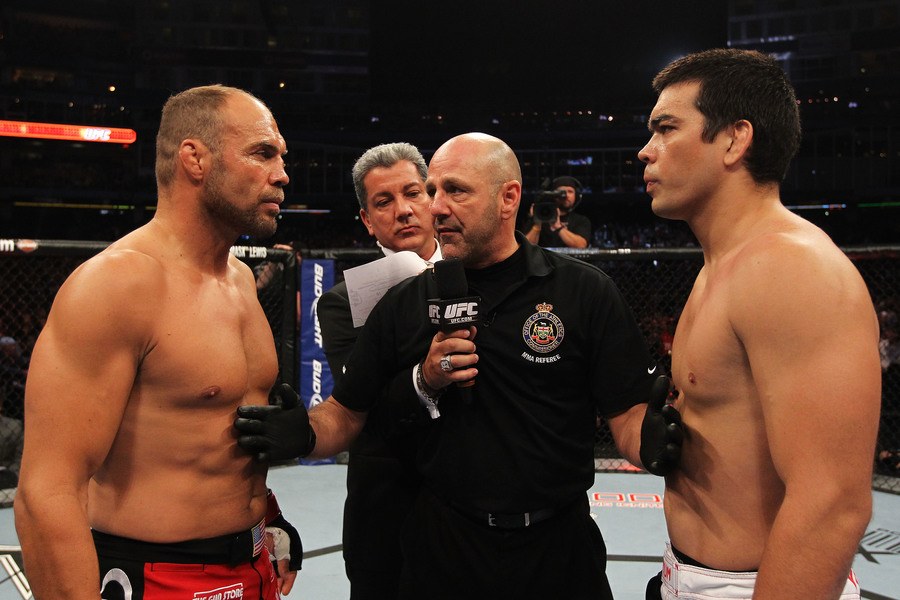
Machida did it flawlessly, without theatrics like raising his arms or a crane stance first. Instead, he leaped forward, his foot thrusting forward to strike Couture’s unfortunate face. The UFC commentators ran wild, screaming “The Karate Kid!” The match records state Couture was knocked out “by crane kick.”
Hold Your Horses, Sir Daniel
Mr. Miyagi’s repeated use of the term “Daniel-San” to refer to LaRusso is a double-edged sword. Since “san” in Japanese is equivalent to “sir” or “mister” in English, the much older, much wiser Mr. Miyagi is jokingly referring to Daniel as “Sir Daniel.”
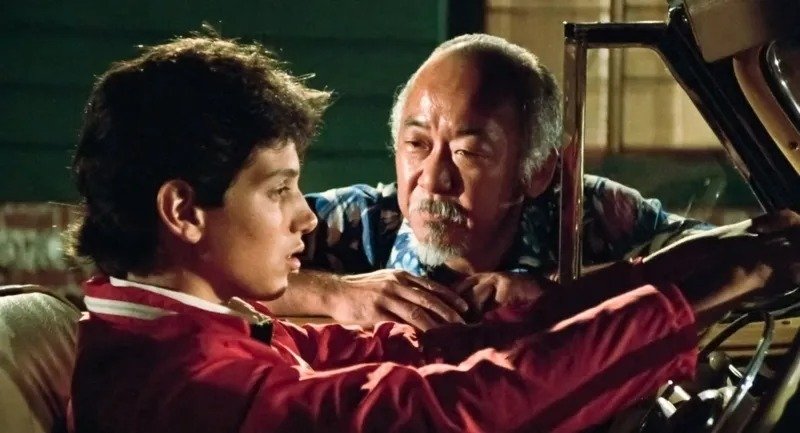
The slight ribbing, on the other hand, serves a very specific purpose: It was meant to keep LaRusso from getting overconfident in his newfound karate abilities. Thankfully, the young master didn’t allow his new skills to get into his head.
Mr. Miyagi as a Backstreet Boy?
Mr. Miyagi might as well have been a member of the Backstreet Boys. “What song were you singing?” LaRusso asks in the movie. We can now tell you that the tune he sings while drunk is a Japanese folk song called “Back Street Life” by Takeo Abe, a well-known Japanese artist.
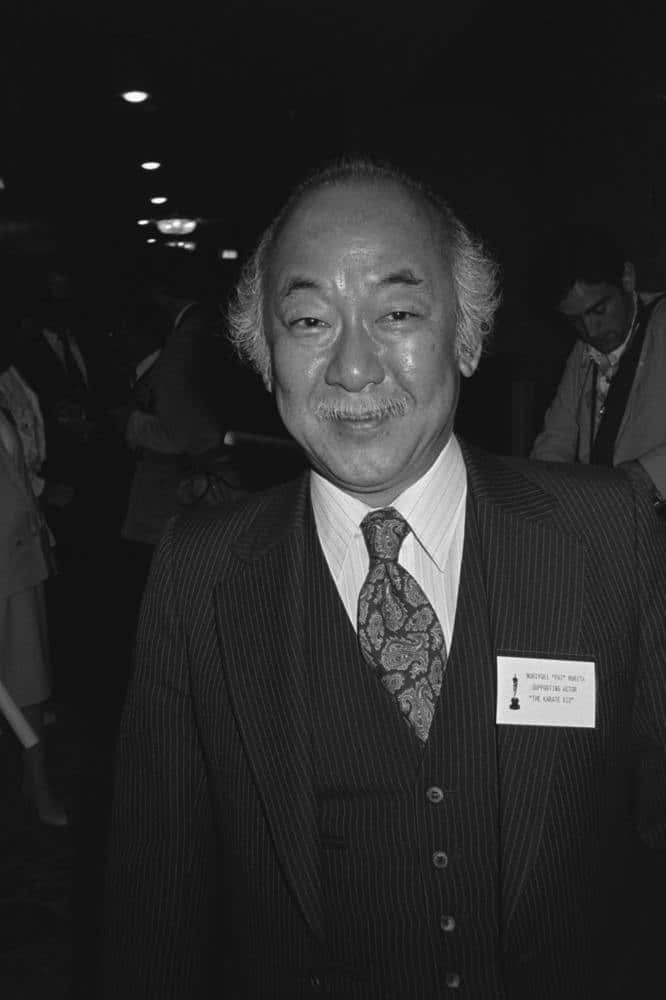
Morita used his imagination to create the scene, recalling a song he heard as a child. The thing is, it wasn’t part of the script for him to sing the song. It was just his creative license. And with the way he sang it, he could’ve been a singer!
Daniel’s Hormones Are Out of Control
The Karate Kid has quite a few Easter eggs laid in it. Some eagle-eyed fans, like us, have noticed little nuances here and there. You might have overlooked them, but don’t worry, we didn’t. It’s a clever one that happens at the local fair. You should remember the scene…
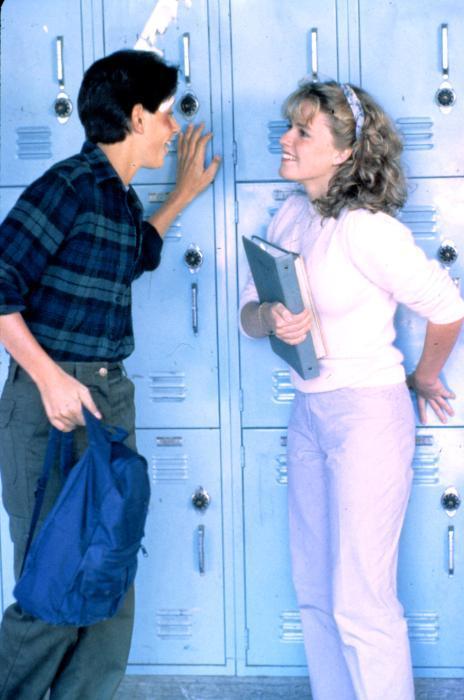
LaRusso goes to find his love interest, Mills, at the local fair. The camera focuses on a gimmicky machine named the “Lover Tester” as LaRusso enters the scene. When LaRusso stands near it, the level illuminates “Uncontrollable,” indicating his love for Ali.
Always Moving Like a Wolf Pack
Lawrence always seems like the big bad wolf in The Karate Kid. But maybe he and his cohorts weren’t that brave. Think about it: To emphasize their cowardly nature, there are only two scenes in which Lawrence doesn’t appear alongside his gang of Cobra Kai members.
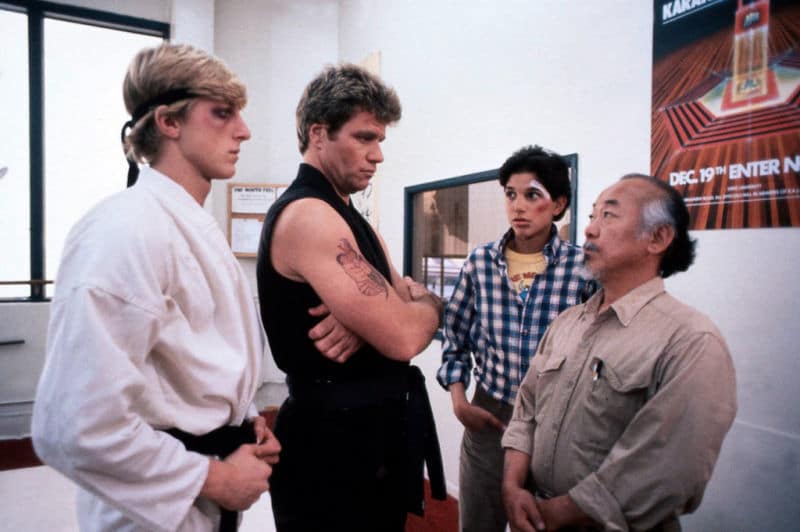
In comparison, LaRusso has no backup and just Mr. Miyagi and Mills as friends. Tommy, a Cobra Kai member, even attends karate practice with Lawrence and the others despite his injured arm. So, you see why we say they might not be as bad individually?
Parents Need to Look After Their Kids, Yeah?
When you watch The Karate Kid dozens of times, you notice things beyond just the movie and have questions, too. We sometimes wonder where LaRusso’s mother was most of the time. Well, we might be able to forgive her for being distant and distracted.
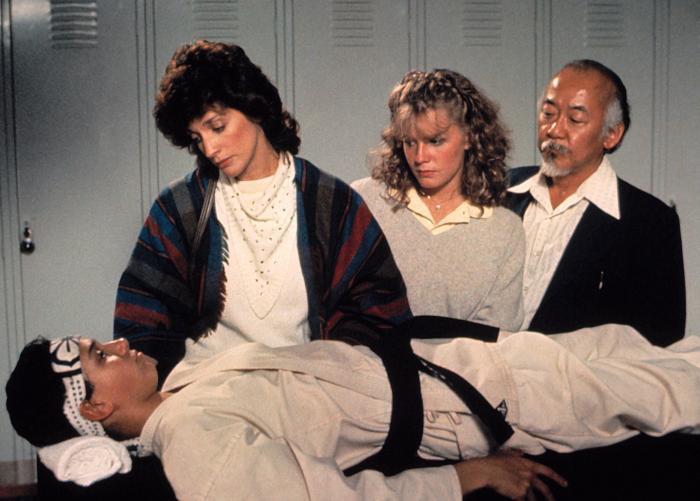
A single mother starting life in a new city with her son is undoubtedly an onerous challenge. Even though LaRusso spends practically all his spare time with Mr. Miyagi, Daniel’s mother, Lucille LaRusso, has only one scene in which she speaks with him.
Daniel, Bonsai or Banzai?
When it comes to pronouncing words, LaRusso is a bonsai bozo. Let’s look back on one scene. Fans might not have picked up on the minor mispronunciation, but Mr. Miyagi screams “Banzai!” a few times in the movie. Banzai translates to “10 thousand years” in Japanese.
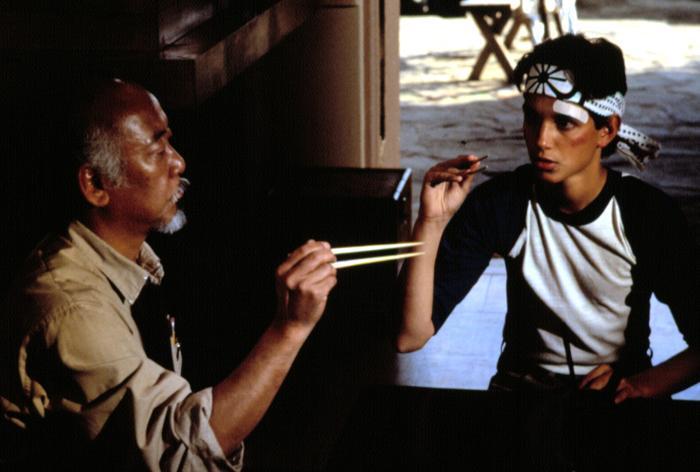
One notable moment Mr. Miyagi says this is when he mourns his wife on their anniversary, handing LaRusso a drink as he screams “Banzai!” You’d think that happened soon enough for the trainee for him to grasp it. But instead, he responds with an ignorant smile saying “Bonsai!”
His Mother Was 14 Years Older
Earlier we mentioned that Macchio wasn’t a “kid” when he played the titular role in The Karate Kid. Here’s a fact about Macchio’s age-defying appearance that will light a fire under your brain: Renee Handler, who plays LaRusso’s mother in the flick, was born in 1947.
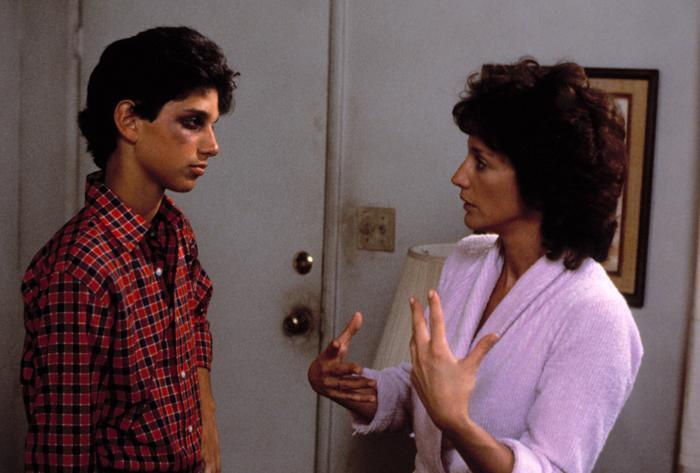
This means she was 37 years old at the time of filming, reasonable enough to be Daniel’s mother if he was 16 years old. Macchio, on the other hand, was about to turn 23 at the time of filming, making his movie mother just 14 years older than her son!
Elisabeth Shue Made It a Family Thing
Before we go ahead, we’re not hinting at any nepotism here. Probably just some cool celebrity status that any sibling would be thrilled to use. Shue’s brother had a minor role in the film. And by “minor” role, we mean he sat for the most part.
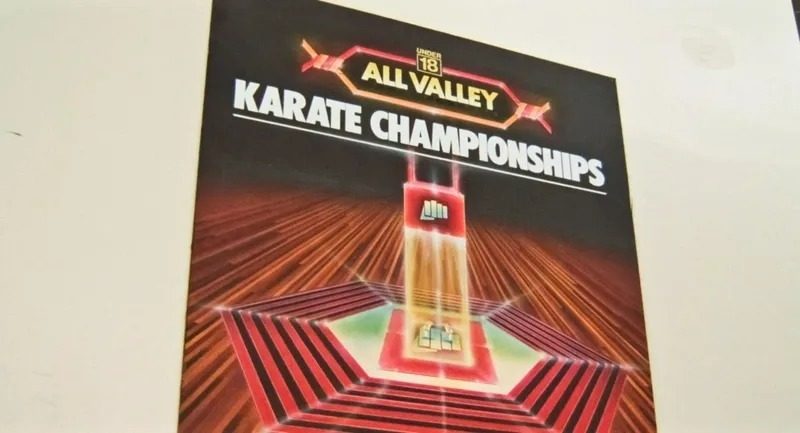
Andrew Shue is a competitor in the All-Valley competition, but he only gets as far as scowling. The Karate Kid might have been his first foray into the entertainment industry, as he went on to star in Melrose Place. He also had a short-lived career as a professional soccer player.
Ralph Macchio’s Elusive Oscar
Sigh. This sounds familiar. Maybe there was a hex on LaRusso for defeating Lawrence and winning the All-Valley Tournament, but Macchio is the only member of the core cast of The Karate Kid who has yet to win or be nominated for an Academy Award.
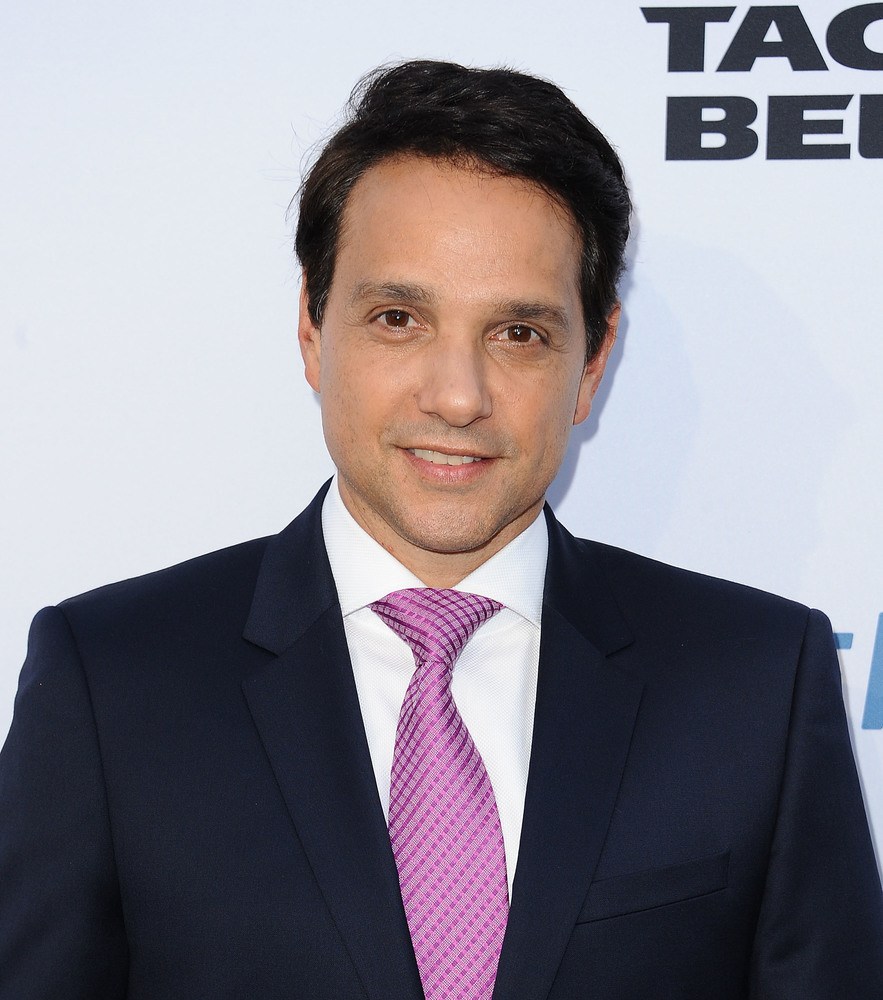
Zabka (Lawrence) garnered an Oscar nomination with his directing partner for their 2003 short film Most, while Morita (Mr. Miyagi), was nominated for an Academy Award. Shue went on to win an Oscar for her role in Leaving Las Vegas.
Inspiring Many, Including Politicians
The Karate Kid was a sensational movie that led to a whole generation of kids tying on headbands. As it turns out, LaRusso’s career wasn’t the only inspiring one. While the flick inspired kids to face their fears, Mr. Miyagi inspired one politician to contest for a position.
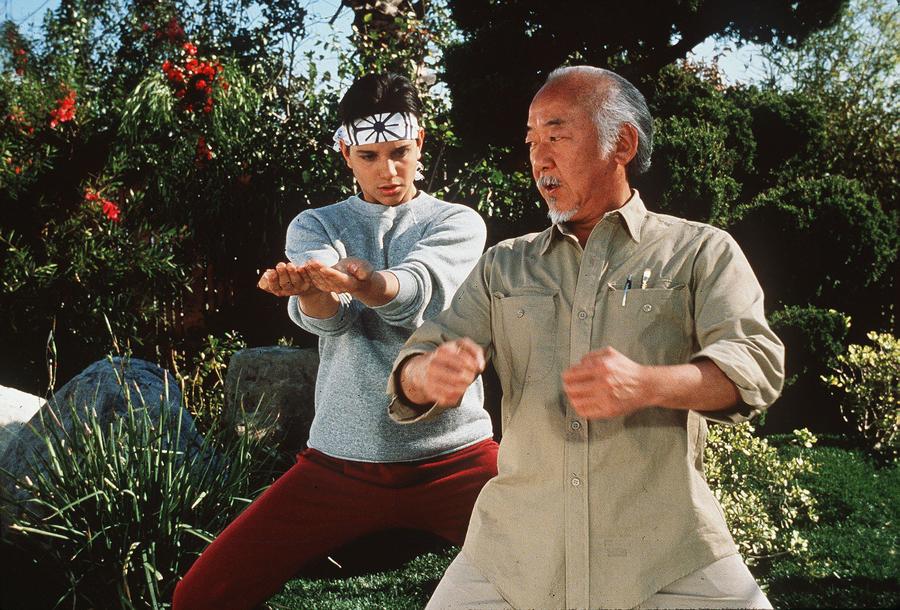
Folkpartiet (The People’s Party), a Swedish political party, took inspiration from The Karate Kid. The elections provided an opportunity to recruit new lawmakers for a mentoring program. The slogan read: “Utan Mr. Miyagi, ingen Daniel-san”. In English, it reads: “Without Mr. Miyagi, there is no Daniel-san.”
Not a Sun, but a Flower
Not a sunflower, either. A FLOWER. The headband from The Karate Kid is iconic. Every 80s kid wanted one. The white cloth with the blue design, officially known as a tenugui, had many a child tying hand towels around their heads in imitation.
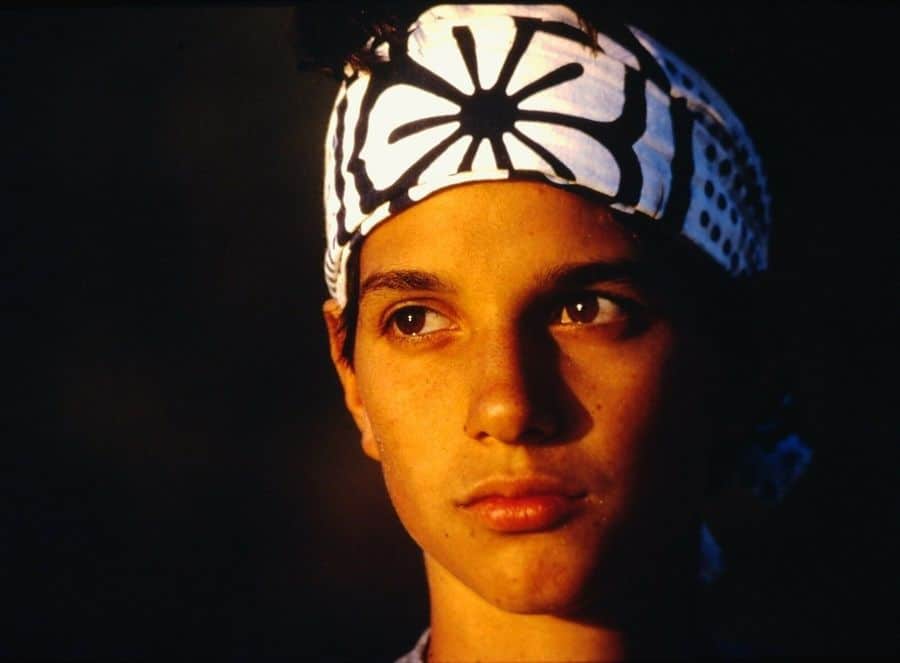
But it wasn’t even supposed to be in the movie. Morita had a handkerchief on him and improvised a headband for Macchio by tying it around his head. Also, many people mistook the pattern on the tenugui for the sun when it was a flower.
The Halloween Skeleton Fight Scene – Curse 1
You remember when we said Morita’s stunt double in the film, Demura, a professional karateka, was accused of hitting other actors too hard in the Halloween scene, which led to many hurt actors. Well, that scene caused lots of challenges. It’s a surprise it wasn’t cut, too.
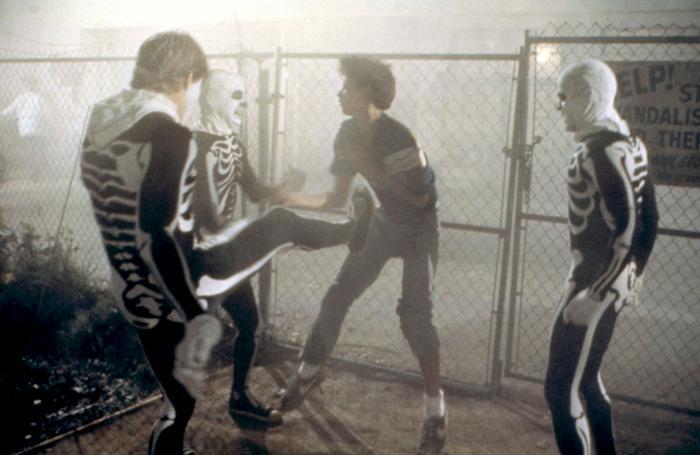
The Halloween skeleton scene was one of the most difficult moments to shoot in the film. Arguably the worst considering what we’ve heard. The final spinning kick that sent LaRusso to his knees was the most devastating of the difficulties this scene posed. But it got worse from there.
Shooting Was Delayed for 2 Days
This spinning kick did connect with Macchio’s face. He was in such excruciating pain afterward that filming was halted for nearly two days to allow him to recover and the swelling to go down! Someone should have told Demura to CHILL!
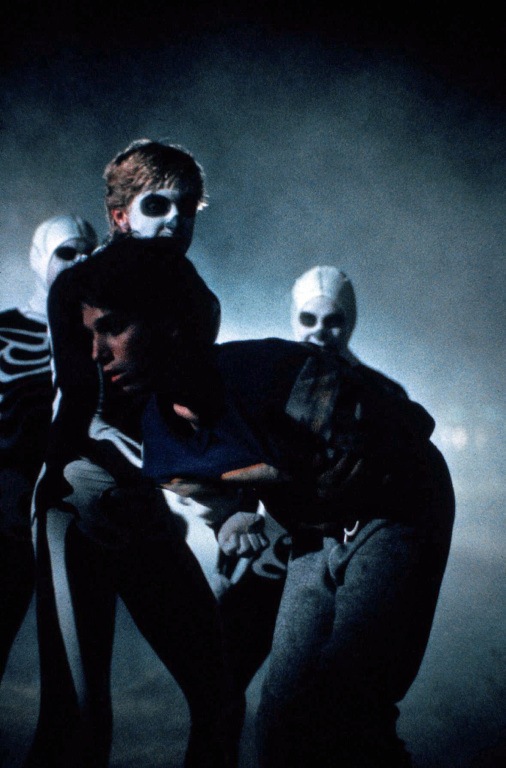
Demura believed the actors were too soft, and that’s why he suggested his students do the scene. He was right in that the scene needed just one take after his students assumed the roles. But still…sorry, Daniel. Imagine a karateka dropkicking you. That must have hurt.
Jerry Weintraub, the Businessman
When the film was set to be released, producer Jerry Weintraub wanted to capitalize on every aspect of the karate and Asian themes as much as possible in his marketing. We’re not blaming him. He’s the producer and should do everything possible to get exposure for his movie far and wide.
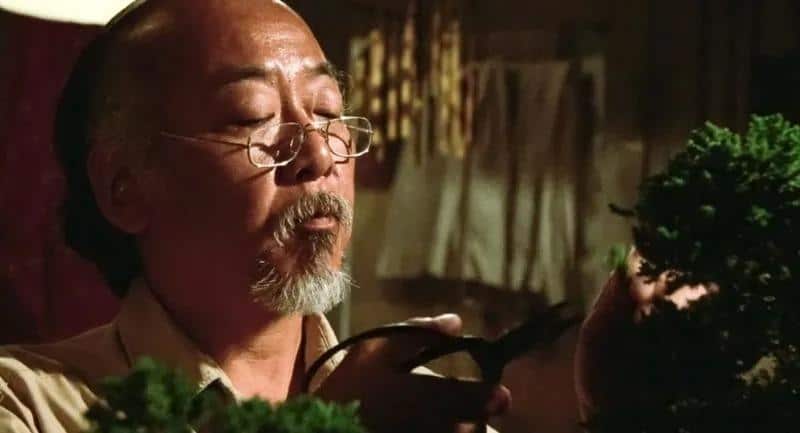
Even though Morita was a well-known and easily recognizable actor, Weintraub proposed that his Japanese name be used in the film’s credits. Morita consented, and Noriyuki “Pat” Morita was given credit. That’s one way to get the Asian audience to watch your movie.
William Zabka Almost Got Lost in His Character
Zabka’s ability to channel his inner bully, Lawrence, was phenomenal. So good and so convincing was his acting that the line between Zabka and Lawrence began to blur to the extras in the movie as they began to jeer him. Poor Zabka.
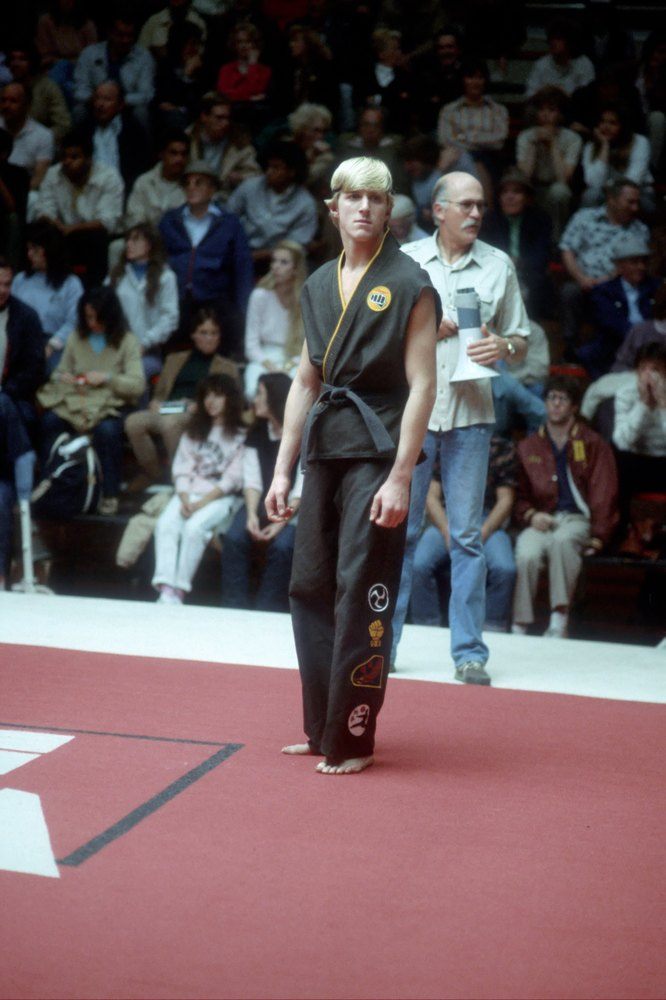
Well, everyone liked LaRusso and wanted him to win. So, who was this bully guy?! During the final tournament scene, the extras continued to jeer and boo Zabka even between scenes. It got to be so much that his real-life mother, who was on set, was said to chastise the extras!
No Autograph, We Want to Fight
Zabka just wants to be left alone, but it turns out the fans are having none of that. He’s not a regular celebrity. Keeping with the Lawrence-hatred theme, Zabka has reported having been approached by random strangers…pretty normal for a celeb. But wait…
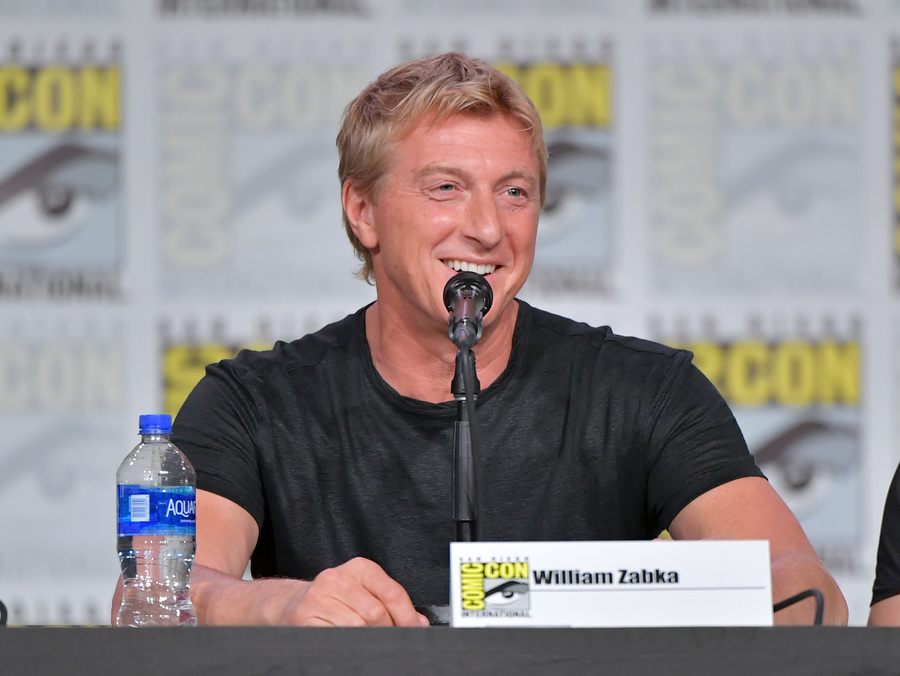
These strangers, instead of asking for an autograph like anyone would when they see a celebrity, ask for a fight! Zabka has had to tell fanatical LaRusso supporters that he is not a black-belt bully in real life but an actor and a nice guy.
Just Business, Mr. Miyagi
Over the years, we’ve seen movie characters have such personal relationships that we all felt it was more than just a movie to them. Many people thought the same about LaRusso and Mr. Miyagi’s relationship. The on-screen bond was so real that fans assumed it continued off-screen.

Unfortunately, this wasn’t the case. Macchio was asked about his intimate connection with Morita and admitted that they merely had a business relationship and were not involved in each other’s personal lives. Zabka and Kove, on the other hand, have remained close for nearly four decades.
Mr. Miyagi’s Smile Is Better Than Any Victory
Macchio might have gotten a little carried away with the title of The Karate Kid. In 2016, Macchio remarked during a fan meetup that his ideal ending was LaRusso being carried off on the shoulders of the adoring audience following his victory. But of course, that wasn’t the end.
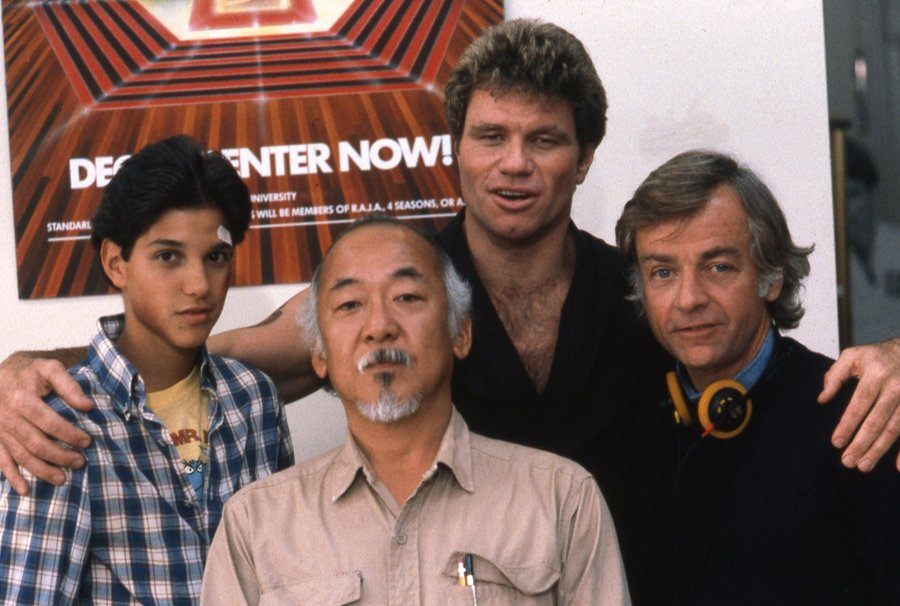
It was, however, the ending that was shot. After a change of heart, Avildsen opted to reshoot the scene with a beaming Mr. Miyagi. Macchio admitted that this was the better closing sequence in retrospect. No wonder Avildsen went on to become one of the greatest movie directors.
Another Trade for Pat
Well, we mentioned that Morita was not only a jack-of-all-trades but a master of all. Morita is an expert on the intricacies of costume design, and the inspiration for the iconic tenugui (headband). Another costume design he created was the bonsai logo on LaRusso’s gi.
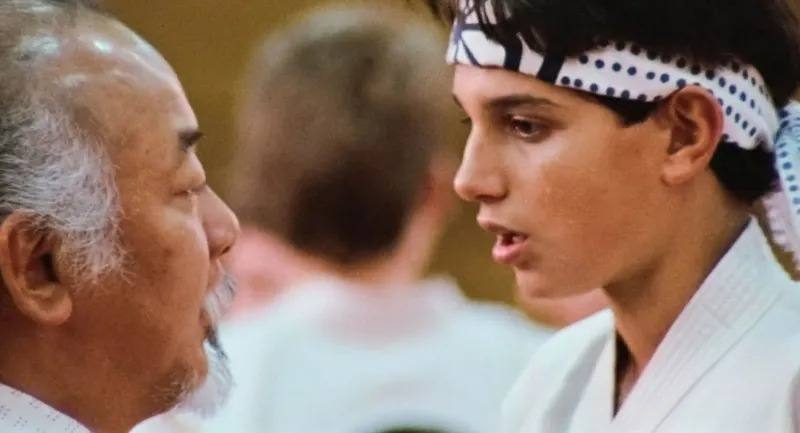
Mr. Miyagi’s words of wisdom to LaRusso inspired the bonsai-themed logo. The words: “Only root karate come from Miyagi. Just like bonsai choose own way grow because root strong, you choose own way do karate, same reason.” It’s not smooth English, but you get the point.
Hollywood or Harvard? What Shue I Do?
We’ve all had to make difficult decisions in life, Shue included. She was nearing the end of her college degree at prestigious Harvard University when she received the offer to play Ali Mills in The Karate Kid.
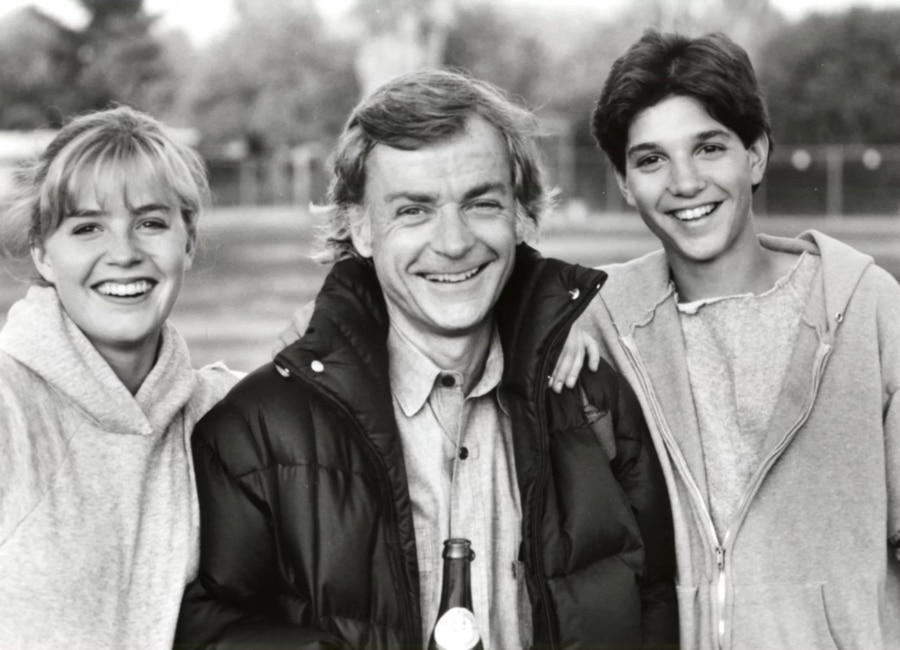
Shue felt she could put her academics on hold for the six weeks it would take to shoot the movie, but had no idea that her performance would propel her to stardom as a highly sought-after A-list actress. She eventually dropped out to pursue her acting profession full-time.
William Zabka’s Green Belt
While Zabka’s karate skills in The Karate Kid were incredibly convincing, he was one of the cast members with no prior martial arts experience. Unlike Macchio, though, Zabka became enamored with karate and continued to learn it, eventually earning a green belt.
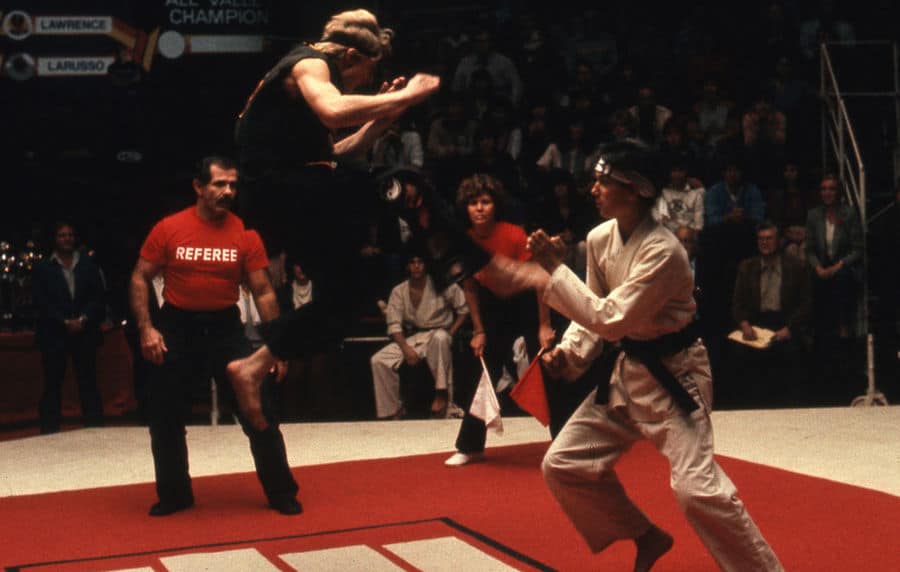
Zabka, a former high school wrestler, revealed that wrestling gave him the ability to “slide into martial arts training” seamlessly. He even went on to state that it was “kind of a nice fit.” This is probably a warning to those fans asking him for a fight instead of an autograph.
Another Incredibly Difficult Scene
It’s remarkable how much CGI is taken for granted by the ordinary moviegoer nowadays. Morita teaching LaRusso how to catch a fly with chopsticks is one of the movie’s most famous sequences. Macchio described the scene as “painful.” We can only imagine.
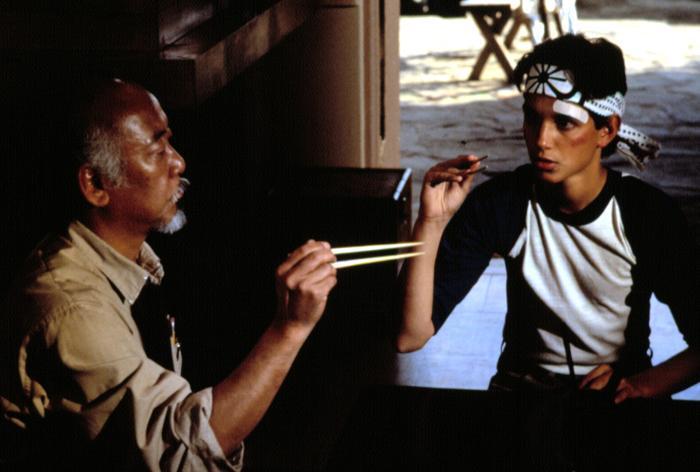
It was difficult because it required multiple flies to be tied to fishing lines to keep them within the frame. To make it appear as though LaRusso had caught the critter, the crew eventually opted to simply change camera angles. Pretty fly for a karateka, yeah?
Donald Rice, Daniel Webber – The List Goes On
The Karate Kid is a perfect example of hindsight. There were a few close calls that could have relegated this masterpiece into the forgotten world of straight-to-VHS movies. Thankfully, the decision-makers and other members of the production crew made the right calls. If they hadn’t…
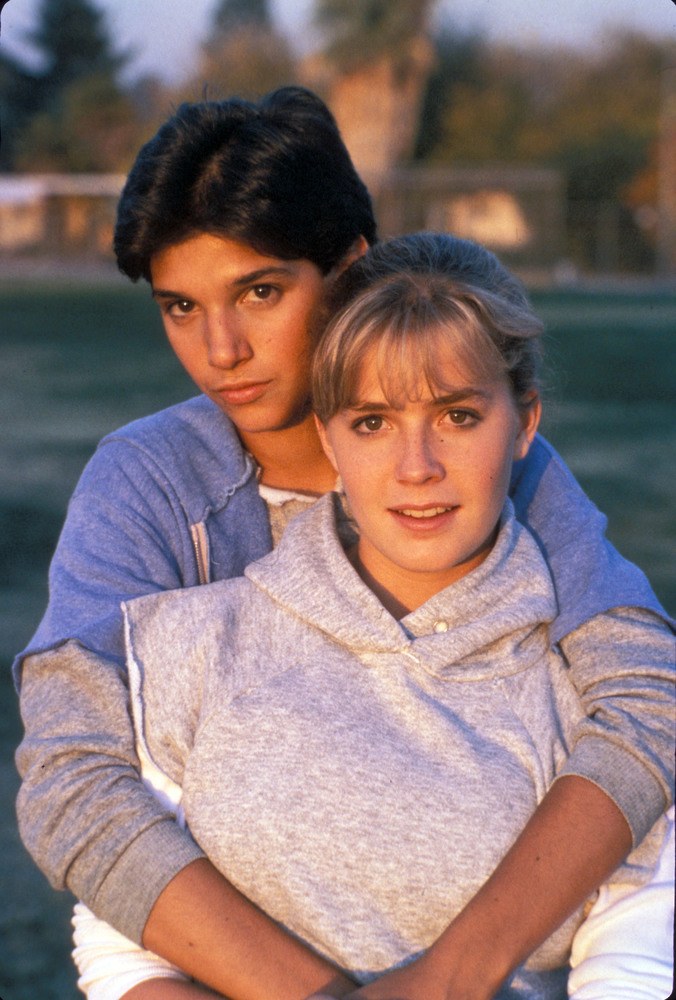
…we would probably not think it worthy to write anything about the movie. Macchio’s casting is an example of this. The filmmakers were so taken with Macchio that they changed the surname of the titular character from Webber to LaRusso to better reflect Macchio’s Italian ancestry.
QuickBooks Gets a Crease from Kreese
Kove reprised his role as the hostile karate instructor, Creese, for a 2018 QuickBooks ad. Cobra Kai and QuickBooks? Well, Kreese reveals — in what we hope isn’t an official backstory — that his overwhelming wrath and frustration sprang from his inability to keep up with Cobra Kai’s bookkeeping!

As a result of QuickBooks getting rid of his frustration, Kreese’s significantly nicer karate school is now known as… Koala Kai. As we have stated, we sincerely hope this is not an official backstory! It should and must remain a commercial. We’ve had enough childhood spoilers today.
Not Japanese – Mr. Miyagi
We discussed earlier that Morita was born in America to Japanese parents. But this wasn’t Morita talking. When telling LaRusso where he’s from, Mr. Miyagi makes an odd statement about his country. Instead of claiming Japan as his homeland, Mr. Miyagi claims Okinawa as his country.
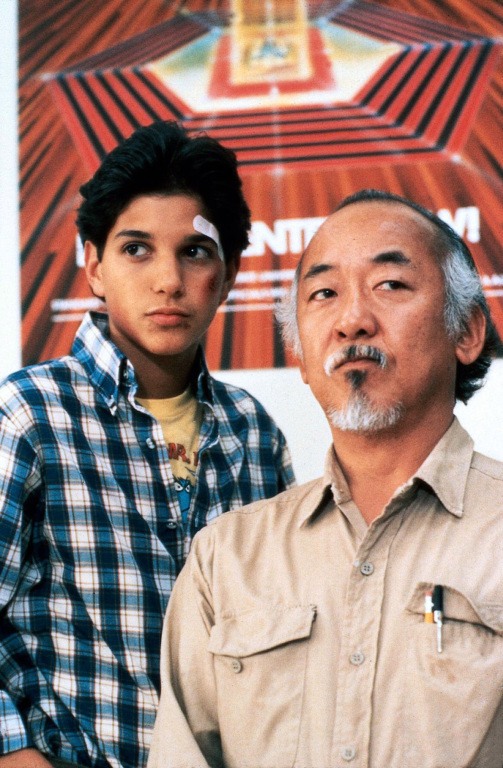
This could be due to some lingering Okinawan pride, given the island was formerly a sovereign nation before Japan conquered it in 1879. The scene where Mr. Miyagi has a little too much to drink and says he served for America in the war adds to the confusion.
Barney Stinson’s Weird Claim
Or wasn’t it weird? In one episode of How I Met Your Mother, Barney Stinson discusses a fan theory he believes in. According to his theory, the real villain in The Karate Kid is LaRusso, not Lawrence. LaRusso instigates confrontation between himself and Lawrence many times.
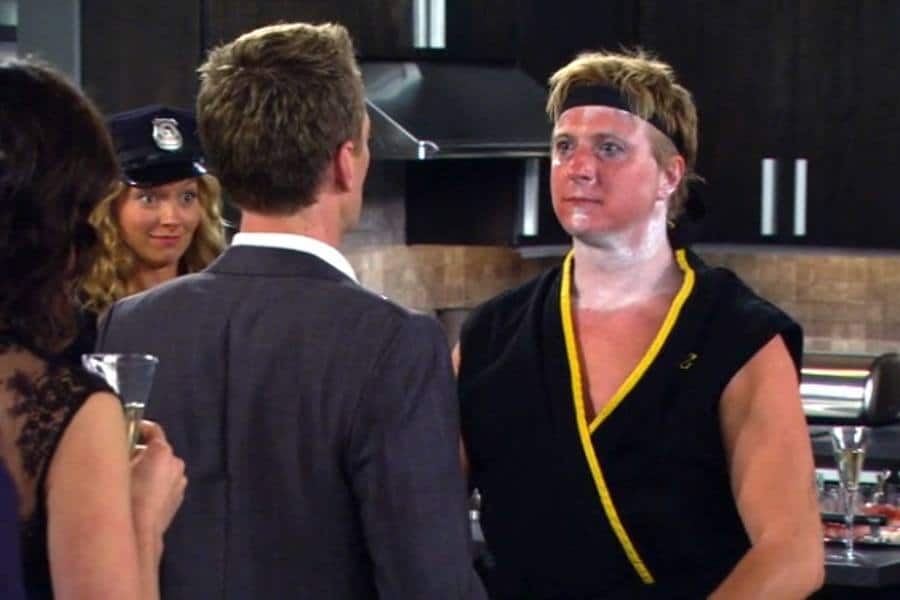
The concrete evidence is LaRusso declaring to Mr. Miyagi that he wants to study karate so he can get revenge on Lawrence, which Mr. Miyagi quickly corrects. We hope Stinson hasn’t been sharing his theory with die-hard fans of The Karate Kid.
The Real Meaning of Cobra Kai
“Cobra Kai” has a good ring to it, but has anyone considered what the “kai” component of the name means? As it turns out, it has a political undertone. It sounds badass every time we hear it, but has anyone thought about what it means?
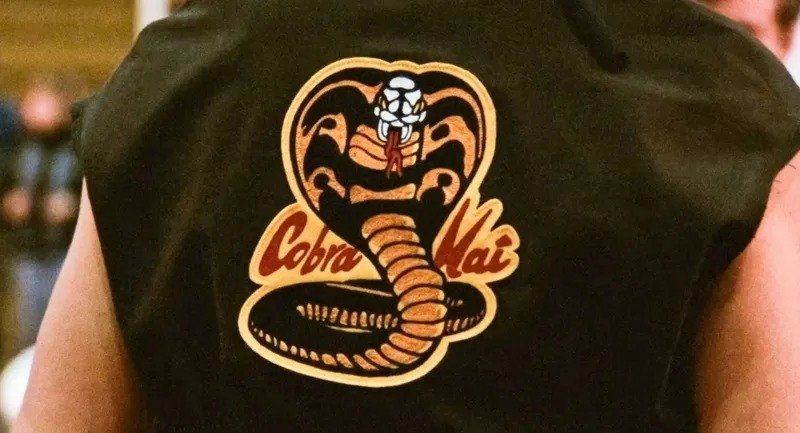
Kai refers to “an organization.” So, when we say Cobra Kai, what we’re saying is “The Cobra Organization.” Adding “kai” to group names is popularly done in Japan by more right-wing groups. Still, we can all agree that Cobra Kai sounds better, right?
Japanese or French; Lost in Translation
Language and translation can be tricky. We’ve seen an example earlier with titles. Here’s another one: Kreese, although a dedicated and accomplished karateka, doesn’t seem to understand the difference between French and Japanese. Kreese, in an unusual move, yells “en garde!“ to start a brawl between pupils.
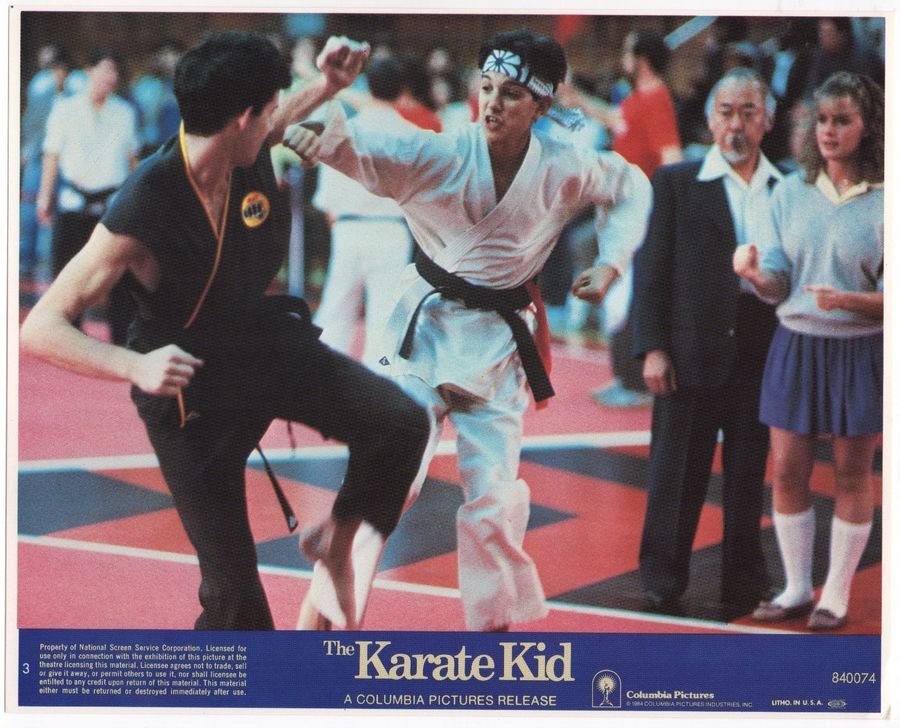
As most people know, “en garde” is a French phrase used by fencers before a duel. To add to the strangeness, the referee, Pat E. Johnson, who, as previously said, was a Chuck Norris student, likewise says “en garde” to mark the start of a bout. Weird!
Alternate Endings = New Beginnings
Mr. Miyagi subdues Kreese at the All-Valley Competition in the first scene of the sequel, The Karate Kid Part II. This scene was supposed to be the final scene in The Karate Kid. In it, an enraged and humiliated Kreese attacks Lawrence after Lawrence loses to LaRusso.
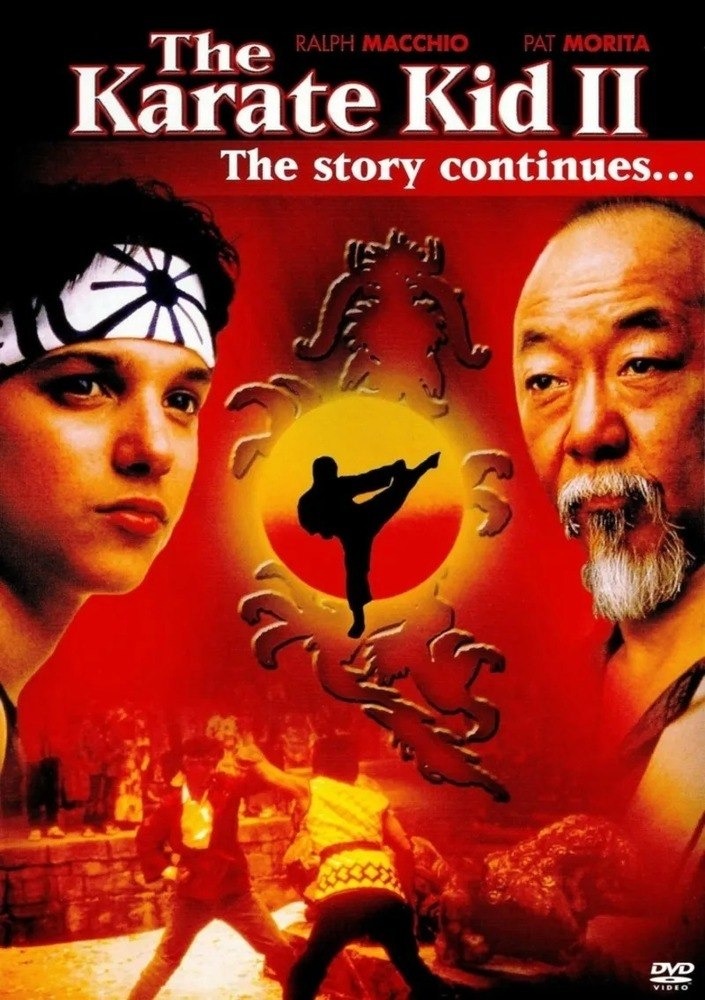
Mr. Miyagi neutralizes Kreese by honking his nose instead of delivering a deadly blow. The humiliating conduct causes the other members of the Cobra Kai to remove their belts in disrespect for their humiliated sensei. This was certainly not how Kreese imagined it would all play out!
Who Fights Karate When There’s Football?
Shue’s plan was always to go back to school. So, after filming for The Karate Kid, she decided to return to Harvard to finish her studies. After the film brought in huge numbers at the box office, Columbia Pictures promptly requested a sequel.
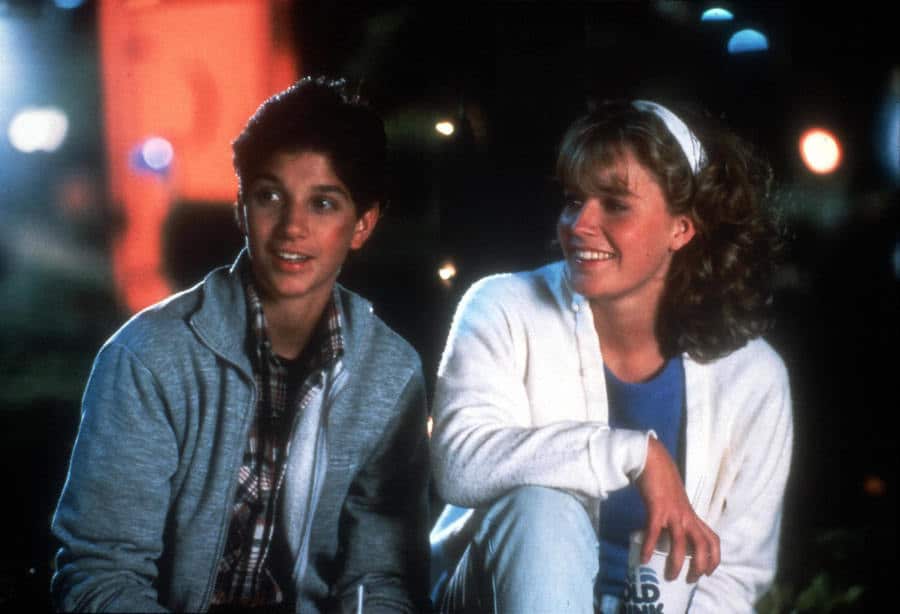
Shue was approached by Avildsen to reprise her role as Ali Mills in the sequel, but she declined because she was adamant that she wanted to finish her studies. The scriptwriters then added a tragic reason for Ali’s departure: She’d dumped LaRusso for a football player.
Into the Freezing Depths
Mr. Miyagi takes LaRusso out on a lake during one of his numerous training sessions, instructing him to stand on the bow and begin practicing. LaRusso does so obediently until Mr. Miyagi starts rocking the boat excitedly, causing LaRusso to fall into the icy water.
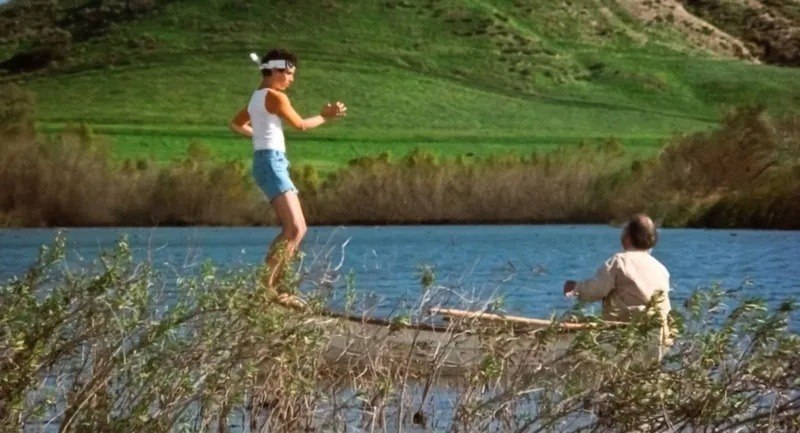
Since the film was shot at the end of the year, it was winter in Los Angeles. This means Macchio’s teeth-chattering, goosebump-inducing flailing wasn’t an act — the water was that cold. We can only imagine what that would feel like. The things actors do for their craft…
The Medals Tell the Story
Remember when we said the attention to detail in this movie is one of the major reasons why it’s a classic? It will continue to remain a favorite. Well, military history lovers will appreciate Mr. Miyagi’s decorated uniform.
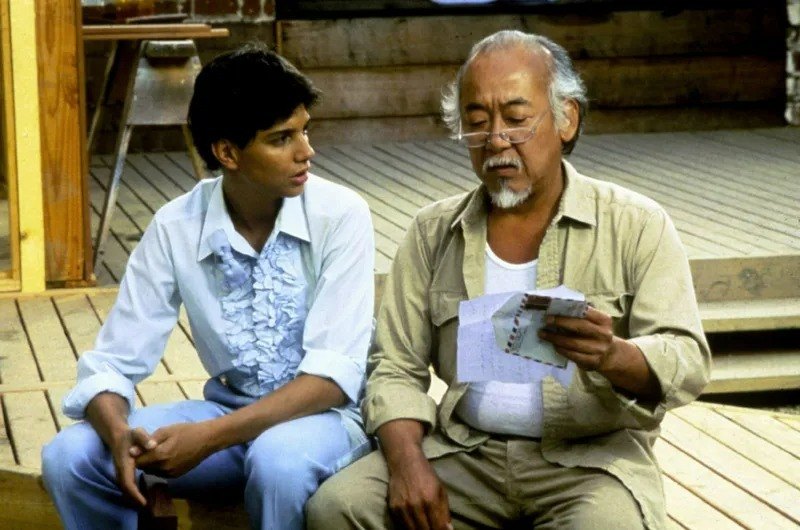
The embellishments on his uniform showed he was an exceptional soldier. It has the emblem of the 442nd Infantry Regiment, a unit of Japanese American soldiers who fought for America during WWII. This is noteworthy since, at the time, discriminatory laws in America required the regiment to train separately.
The Fear of William Zabka…
Zabka relied on method acting to get into his character as Lawrence, even for the audition. Zabka revealed that because his character was a gang leader, he had to create a “hostile environment,” so he didn’t mingle with the other auditioners while on set.
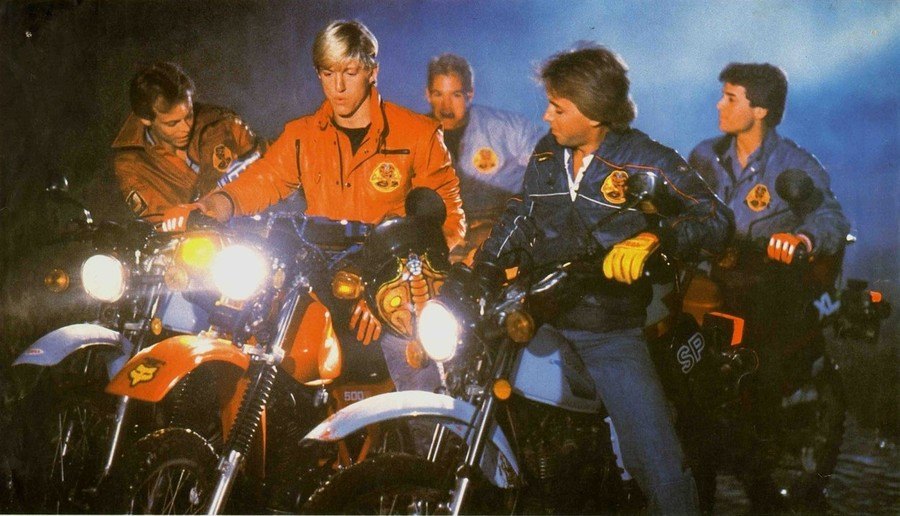
Instead, Zabka sat in his father’s car, blaring loud rock music, until it was time to read his lines. After his first reading with Macchio, Macchio told the filmmakers that Zabka “scared the s**t out of me!” and that the method acting was a success. Way to go, Zabka!
The Method Cobra Clique
As it turned out, Zabka wasn’t the only actor on set who resulted in method acting. His whole gang had to do it to be more effective. Some members of the cast appear to have taken method acting to the next level.
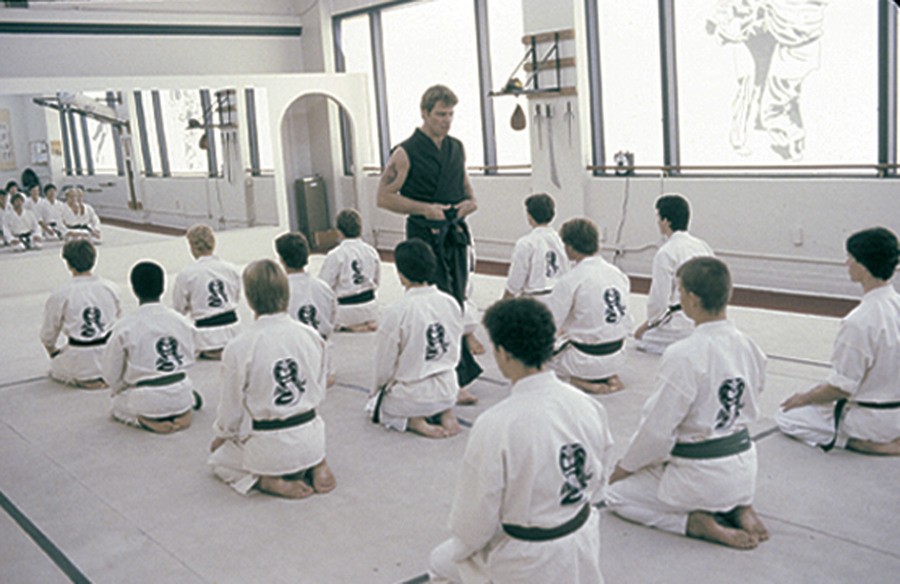
To keep a separation between the characters, Avildsen purposefully blocked out reading and rehearsal sessions. Avildsen made the Cobra Kai group rehearse together to help them bond. They were intentionally kept away from Macchio, and they formed a “little fraternity” during the practice weeks, according to Zabka.
The Secret Martial Artist
Remember the Ron Thomas (Bobby Brown) we mentioned earlier as one of the only actors who knew martial arts? But there was one peculiar thing: He hid this fact from the studio because it was looking for actors, not actual martial artists.
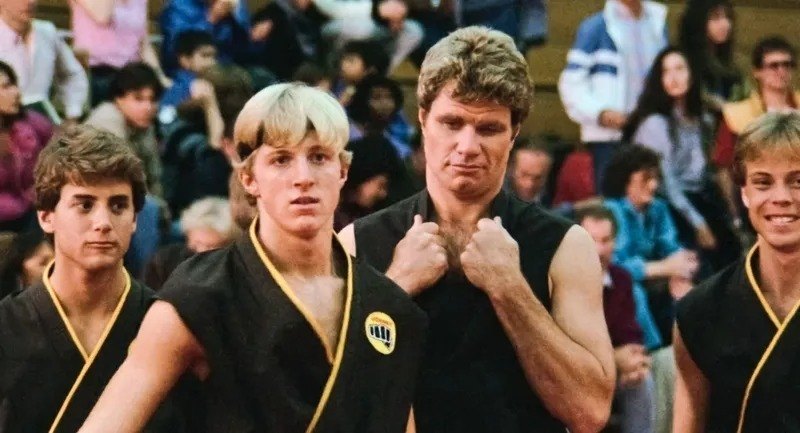
But it was only a matter of time before Brown was found out. It’s not easy keeping a second-degree black belt in Ju-Jitsu hidden for long. After a few weeks, Johnson confronted Thomas saying, “You know something, don’t you?” Thomas couldn’t hide any longer, so he spilled.
Learning the Basics of the Game
Johnson taught all the actors the fundamentals of karate, which they applied in the film. He recalls training Morita and Macchio separately but with the same rigor, which resulted in several complaints from the actors. Turns out, even the sensei got tired.

This was intentional since the single-minded, tough training was intended to create a challenge that would eventually lead to a bond between Macchio and Morita. We can agree that this worked effectively because fans ended up thinking Macchio and Morita had a personal relationship beyond the movie.
Mr. Hashimoto Was Cut Out
In the original script, Mr. Hashimoto was supposed to be a responsive training dummy. Mr. Miyagi was supposed to produce this dummy for his student’s training by using a broom and some clever hydraulics to swing the broom at LaRusso.
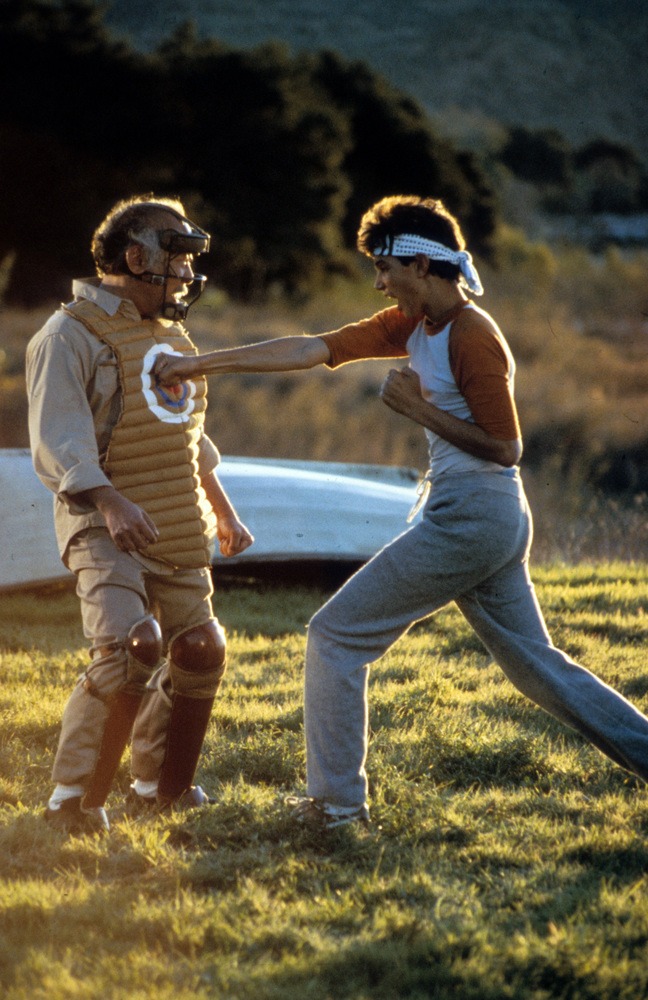
The execution of this apparatus was a failure. When it just didn’t seem to work, they came up with a new idea. Instead of Mr. Hashimoto, the scenario was modified to feature Mr. Miyagi dressed as a baseball catcher, complete with chest protector and helmet, having LaRusso practice on him.
There Was a Real All-Valley Tournament
Nowadays, a few mouse clicks can get CGI to perform the work for a director to generate raucous crowds at any event. This was not yet a thing in 1984, so extras were needed. The script called for up to 1,000 people to compete in the All-Valley Tournament.
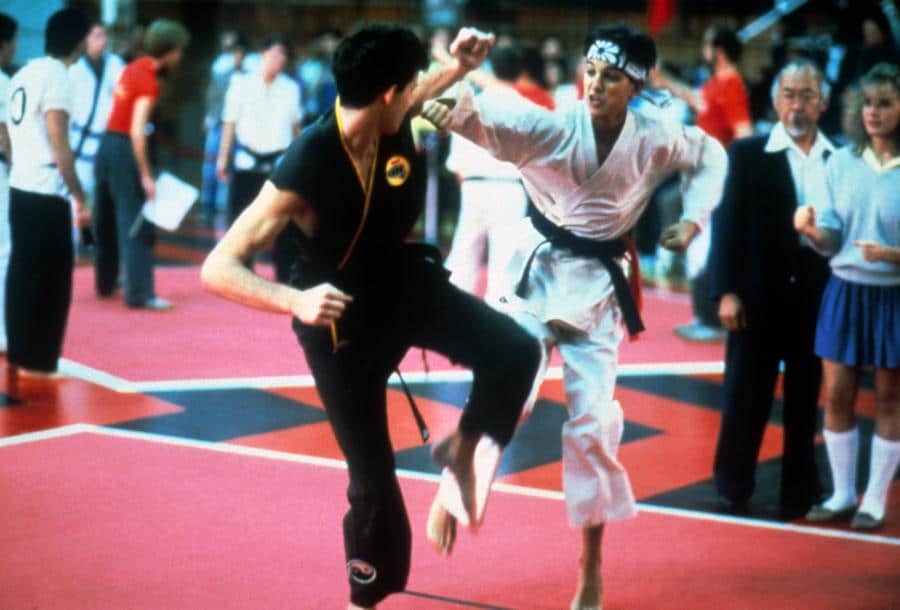
To get around this, the studio held a full-fledged karate tournament with trophies and medals. As you’d expect, the contestants were told to ignore the cameras and crew and to go about their business as usual. So, everything looked real because it was real.
The Halloween Skeleton Fight Scene – Curse 2
You thought we were kidding when we said it was one of the most difficult scenes? Rob Garrison, who played Cobra Kai member Tommy, was seriously hurt by Morita’s stunt double, Demura, while filming the Halloween fight. “Everyone remembers Ralph [Macchio] getting hurt,” Garrison said in an interview.
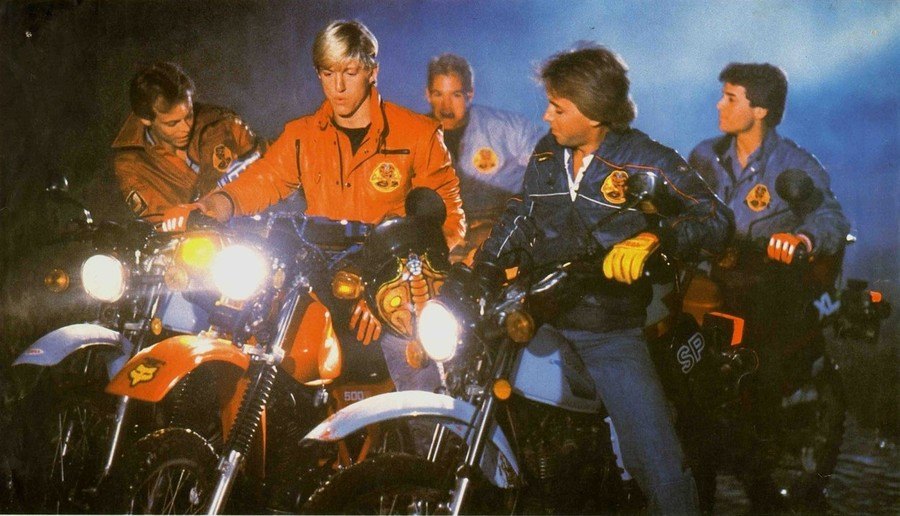
Garrison was knocked out by what he called an “overenthusiastic” Demura. Tommy was supposed to bend over after being kicked in the groin, and then be knocked out by a punch to the face. But he ended up with a fractured nose. Demura just wanted to knock everyone out.
Mr. Miyagi Was Everyone’s Favorite
Morita was a trained and very talented comedian and actor, and everyone’s favorite on set. Many The Karate Kid fans know him as the gentle and focused master of the young LaRusso. But Morita was much more.
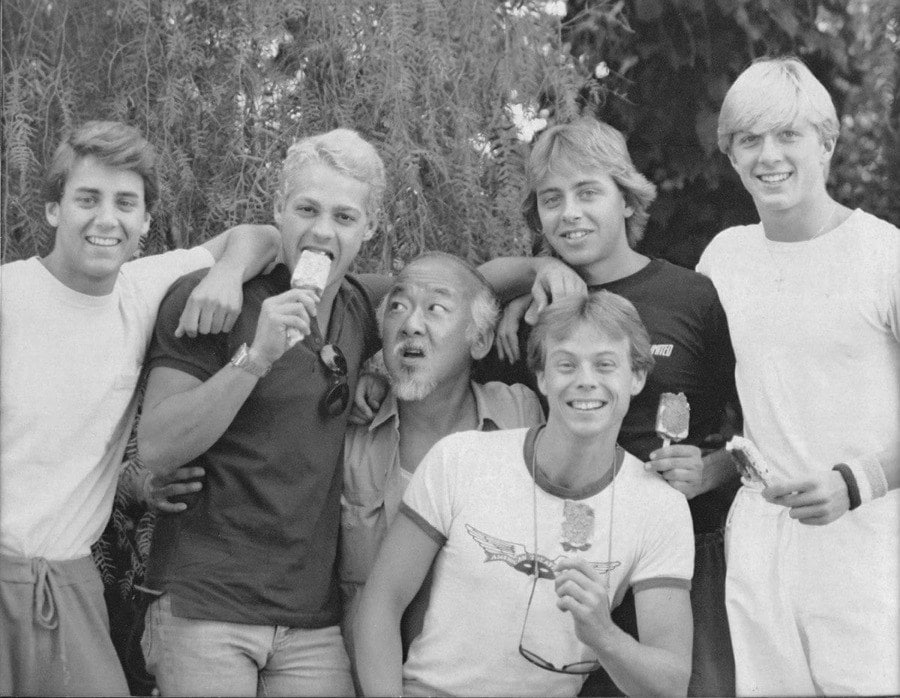
When recounting their experiences on set, Macchio described Morita as “a stand-up by nature.” Morita seized every opportunity to crack a joke and always managed to make everyone laugh. What a man. What a legend. He was a major part of why we loved the movie so much!
